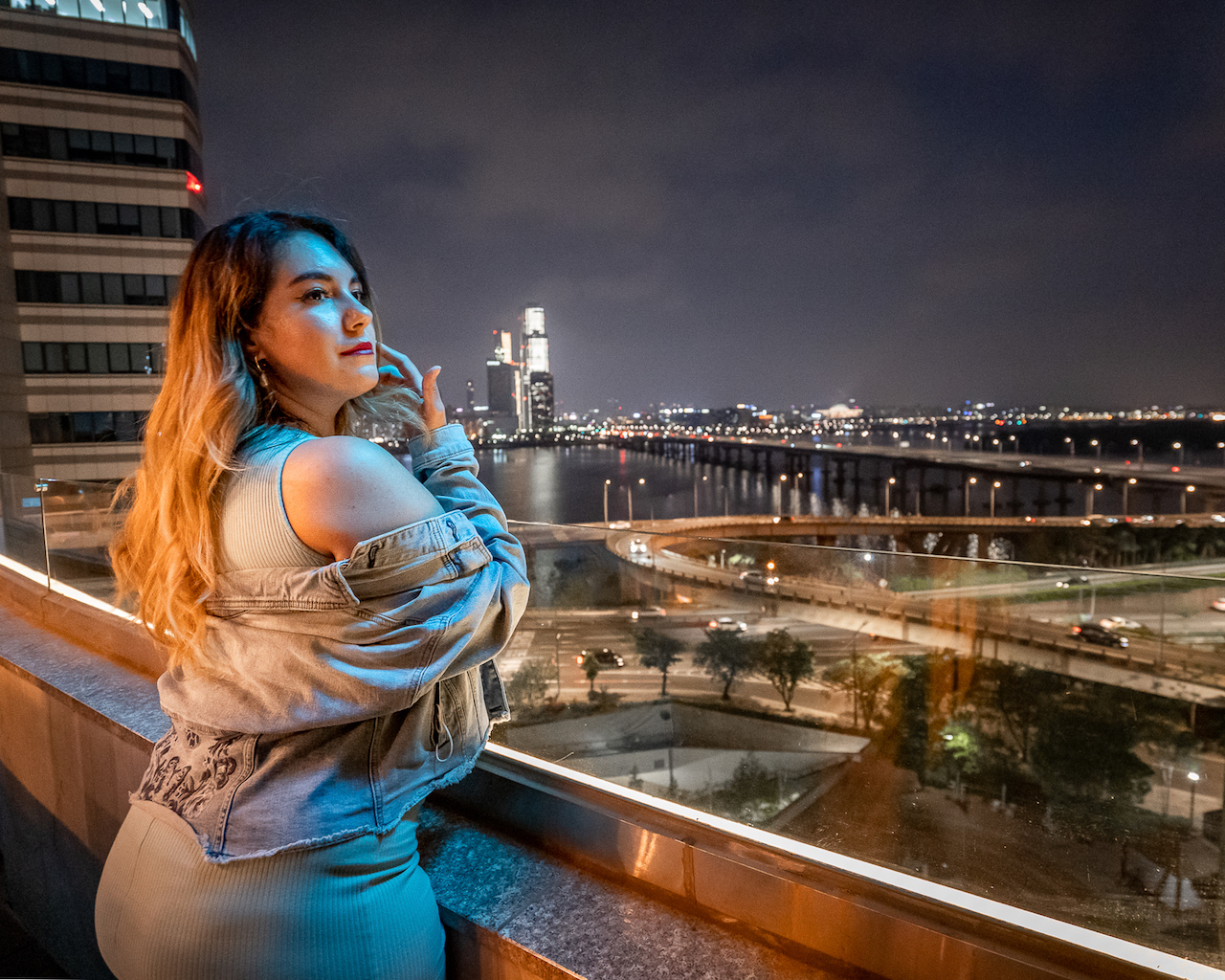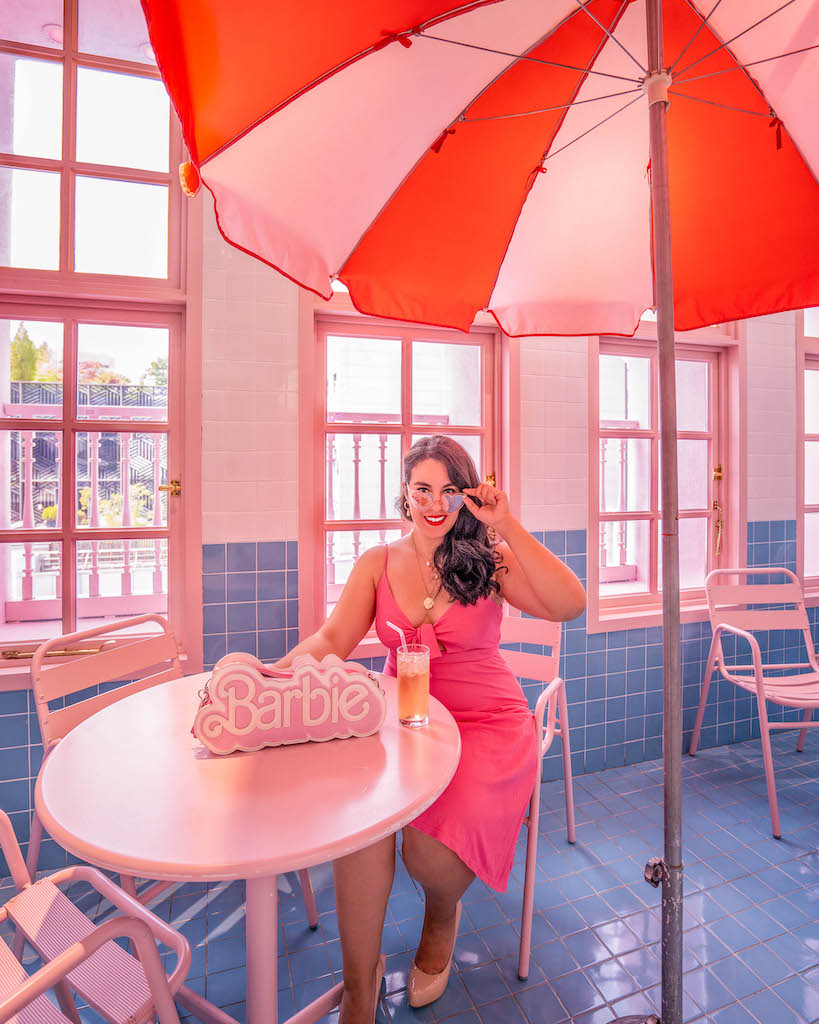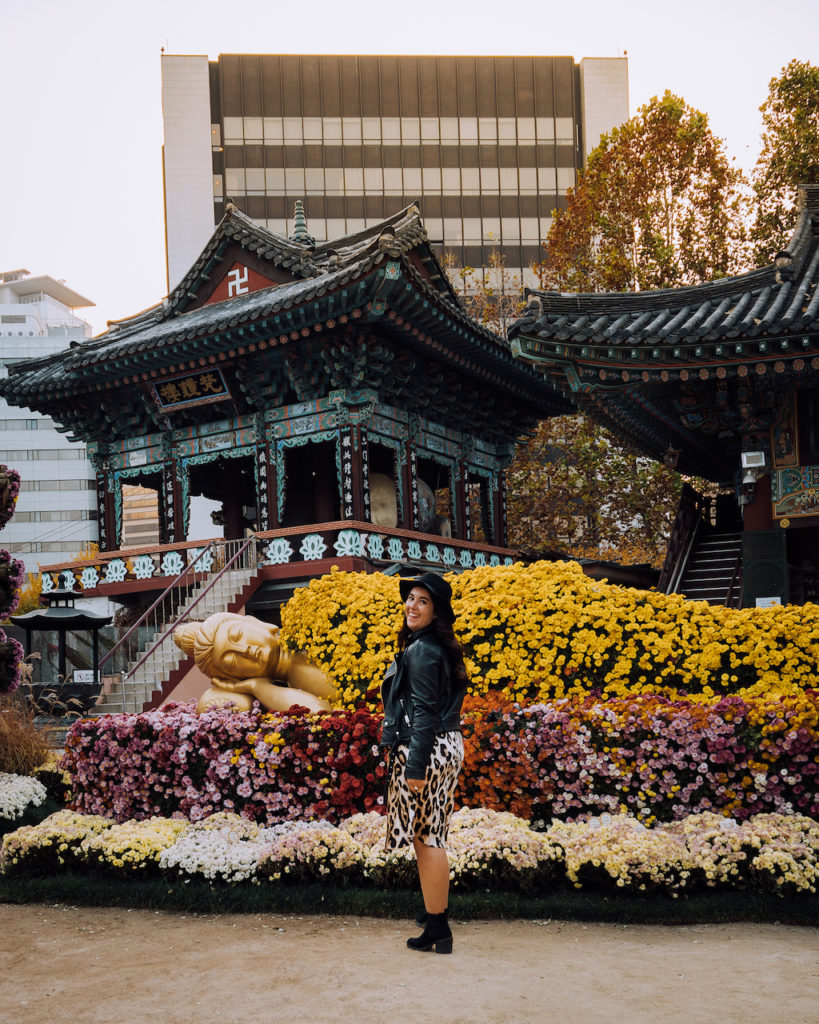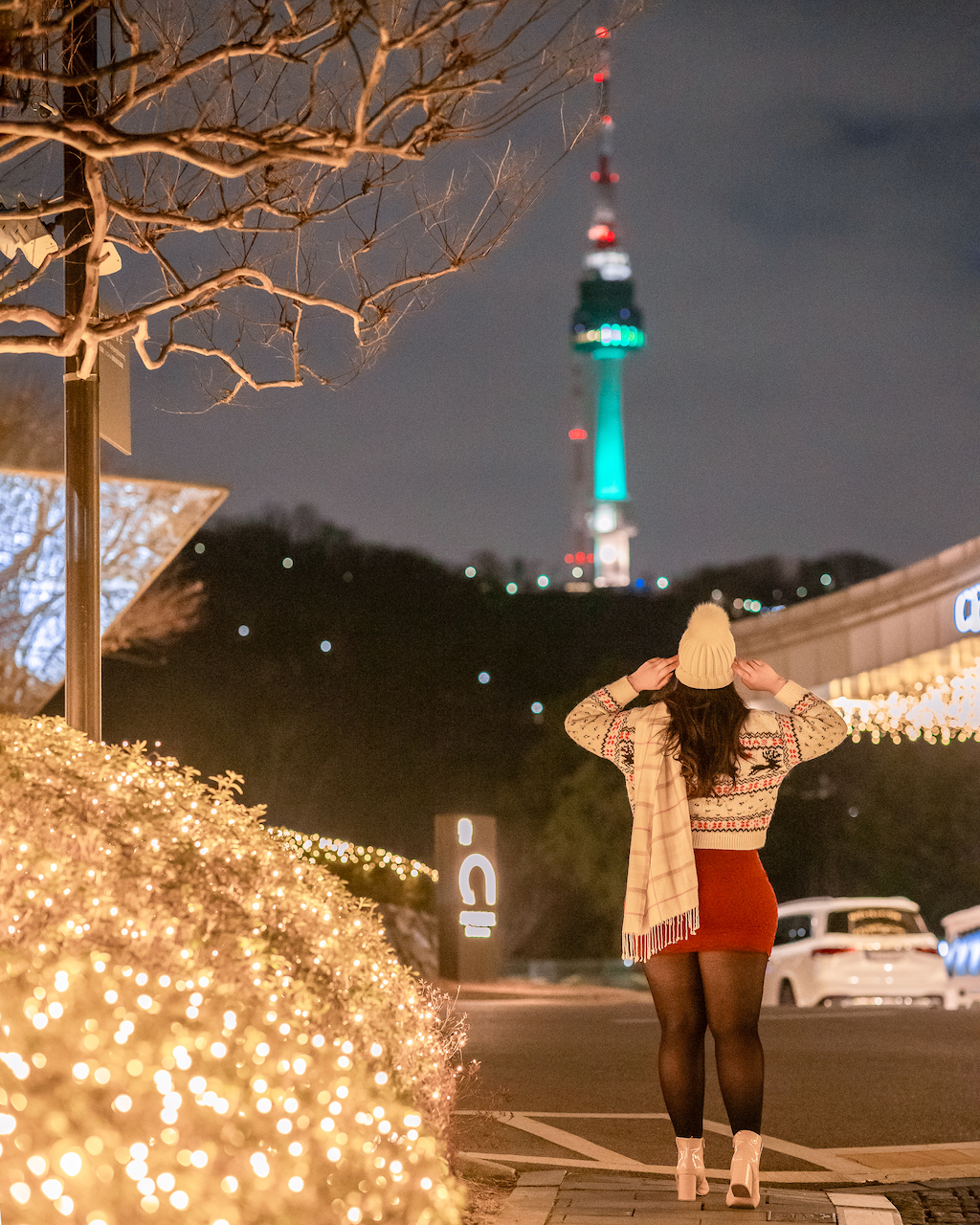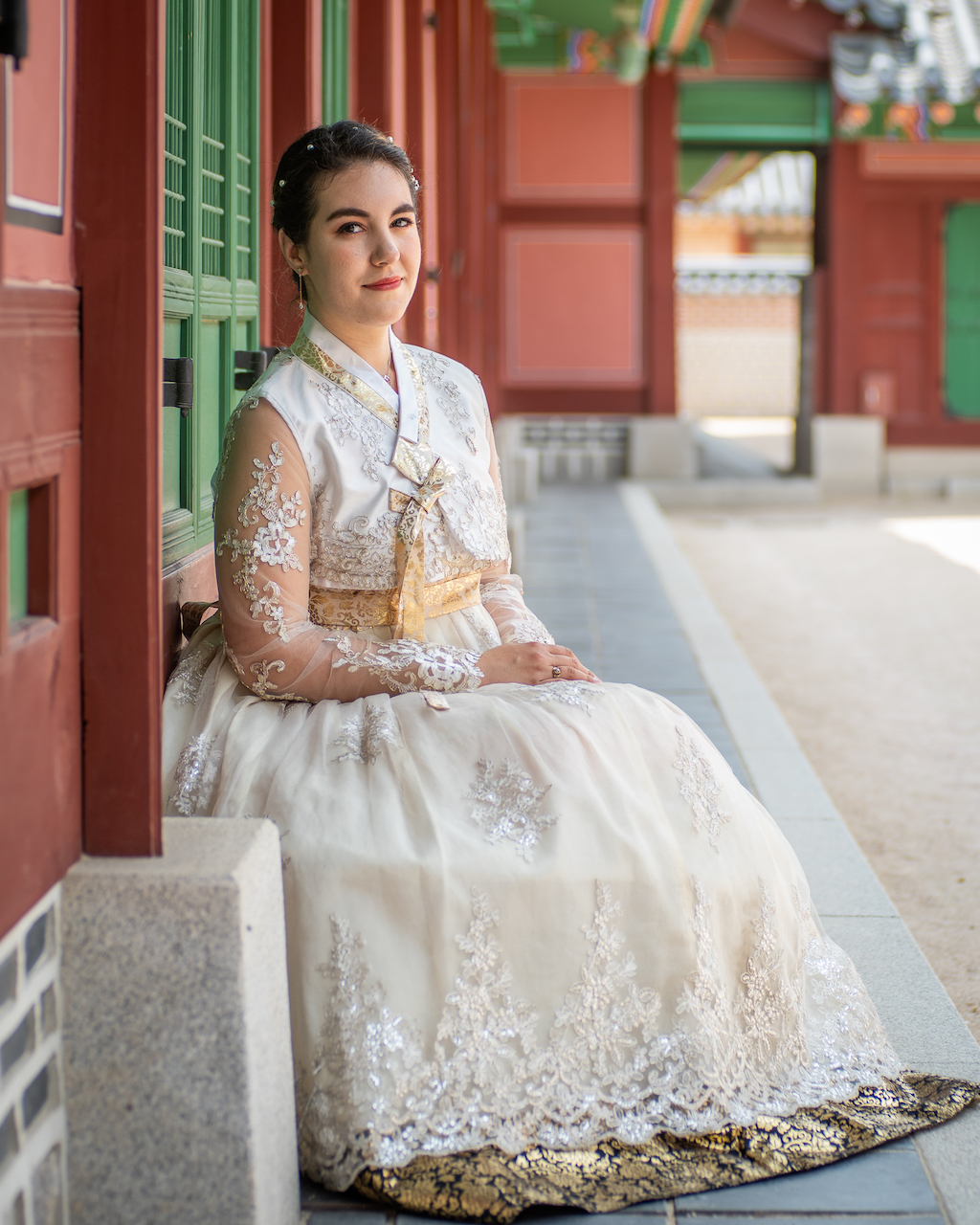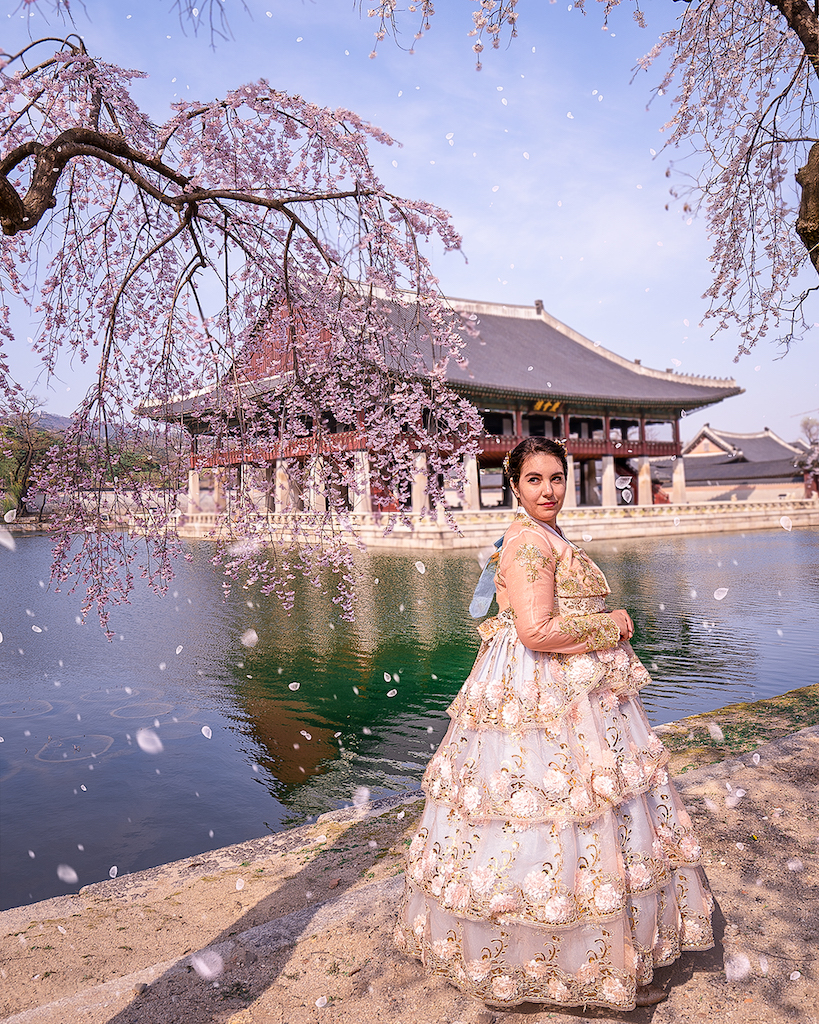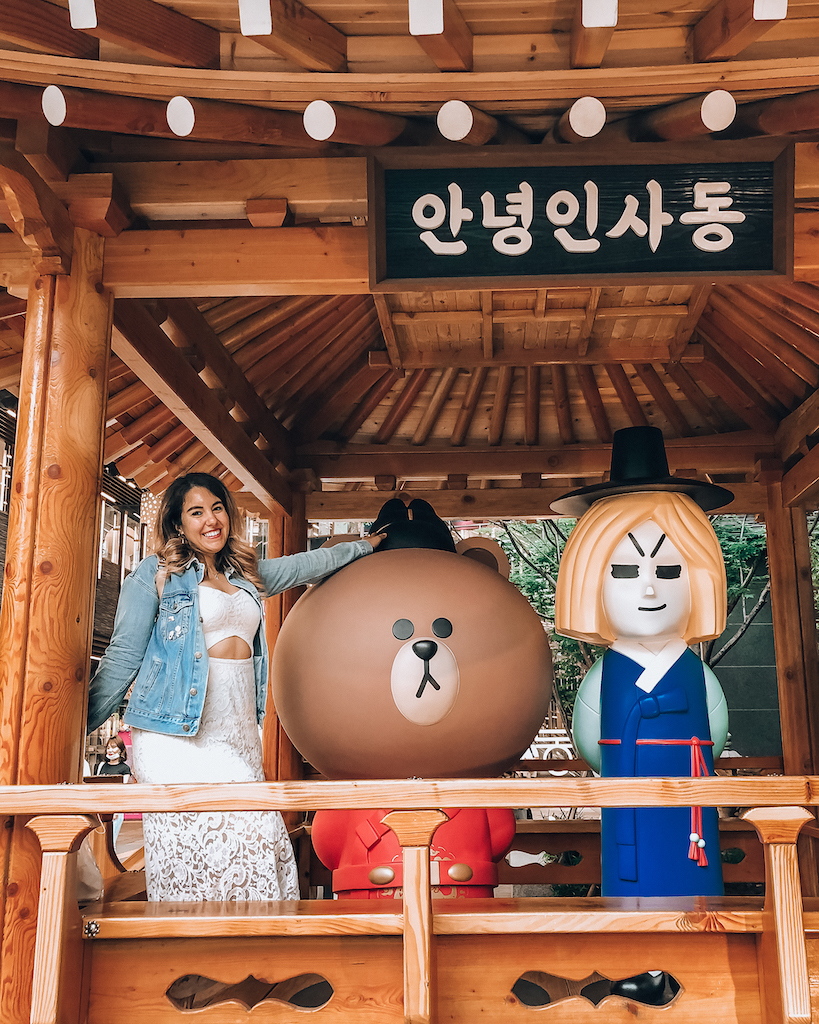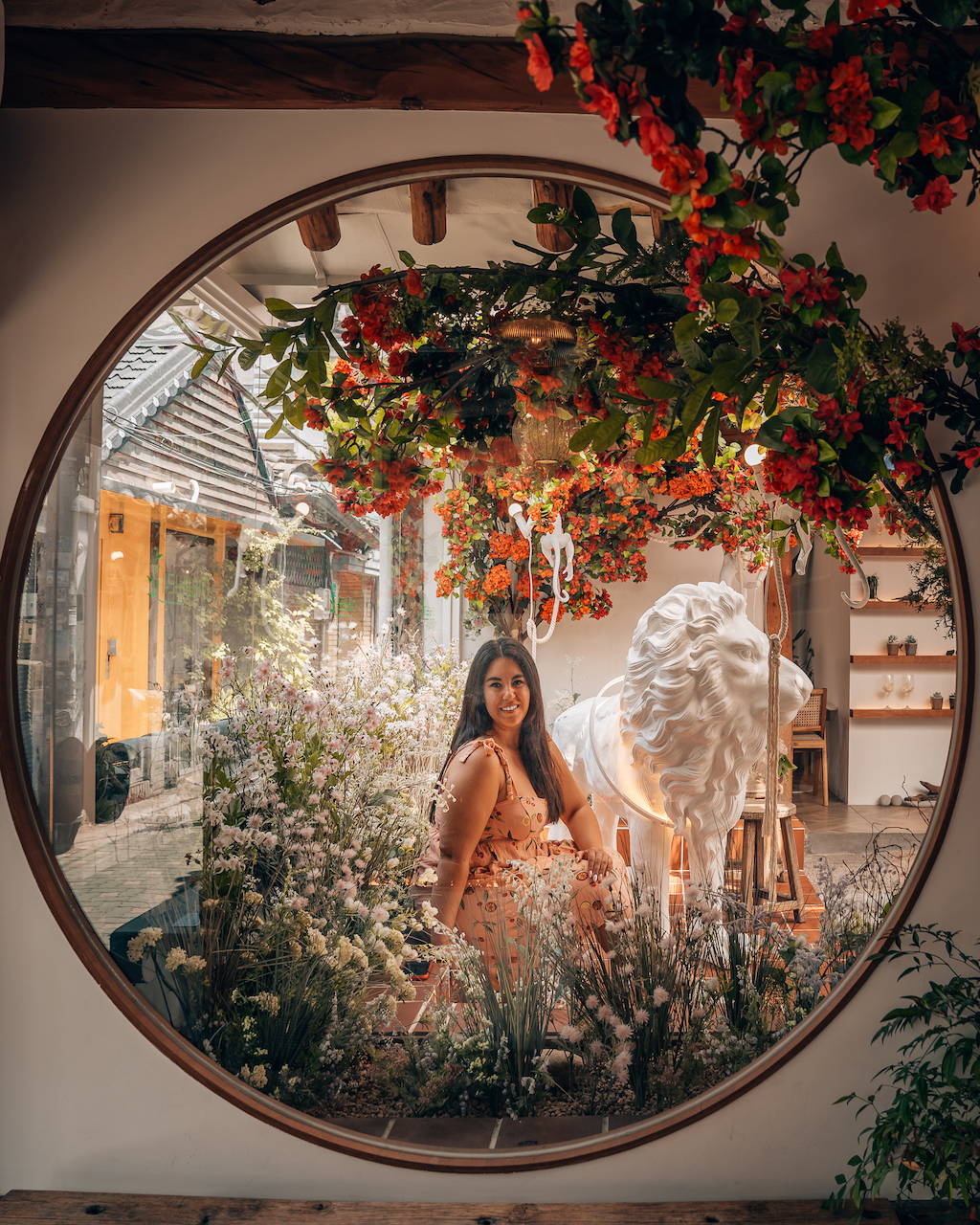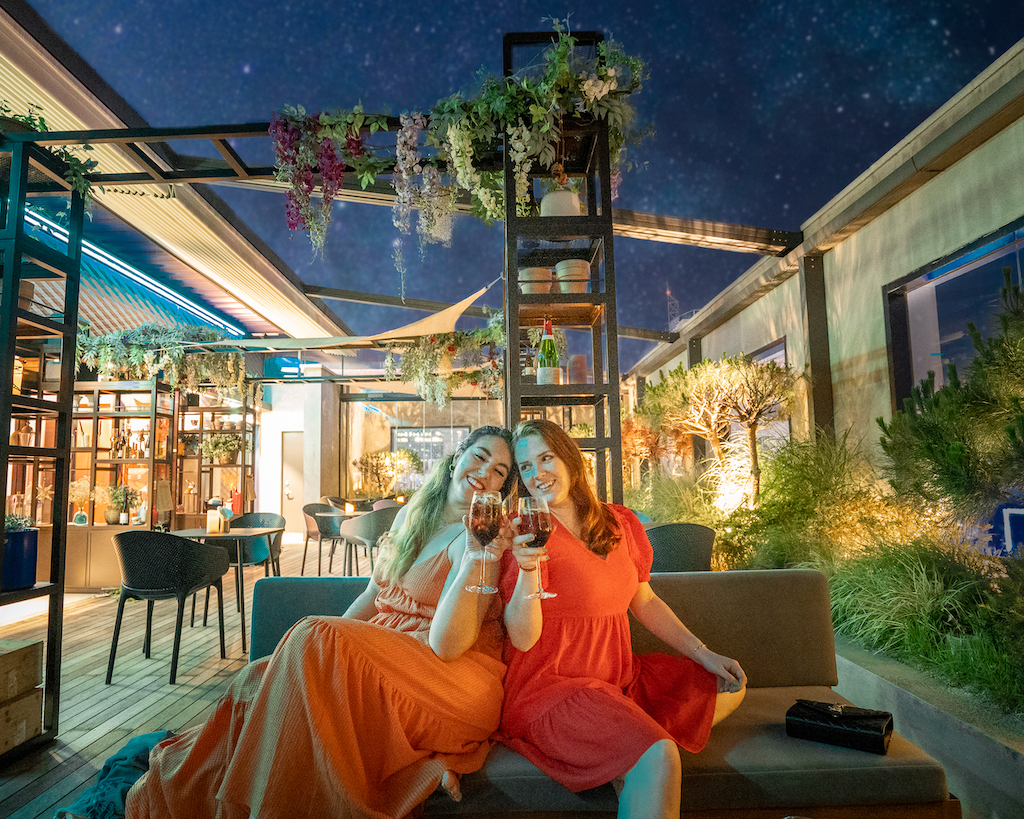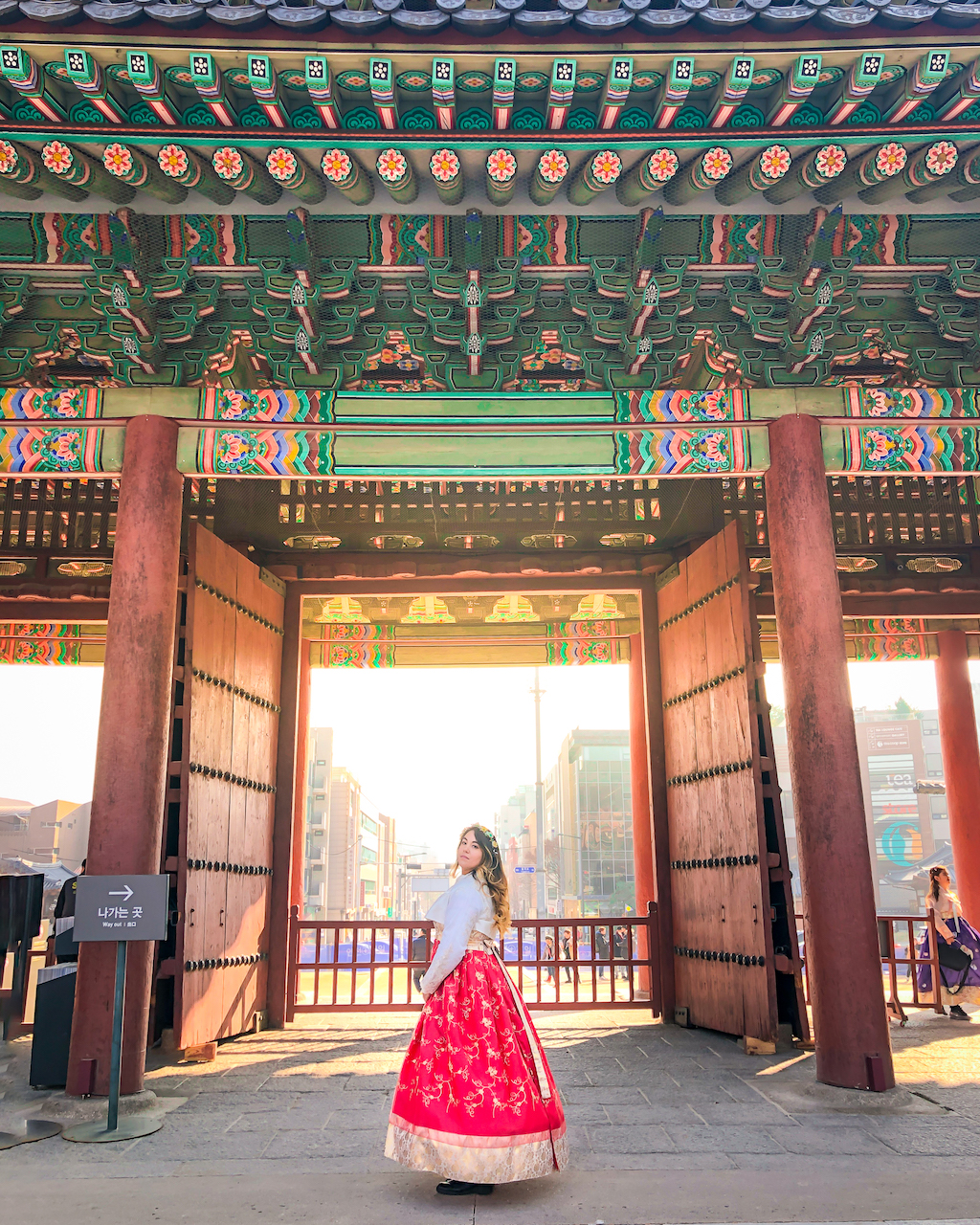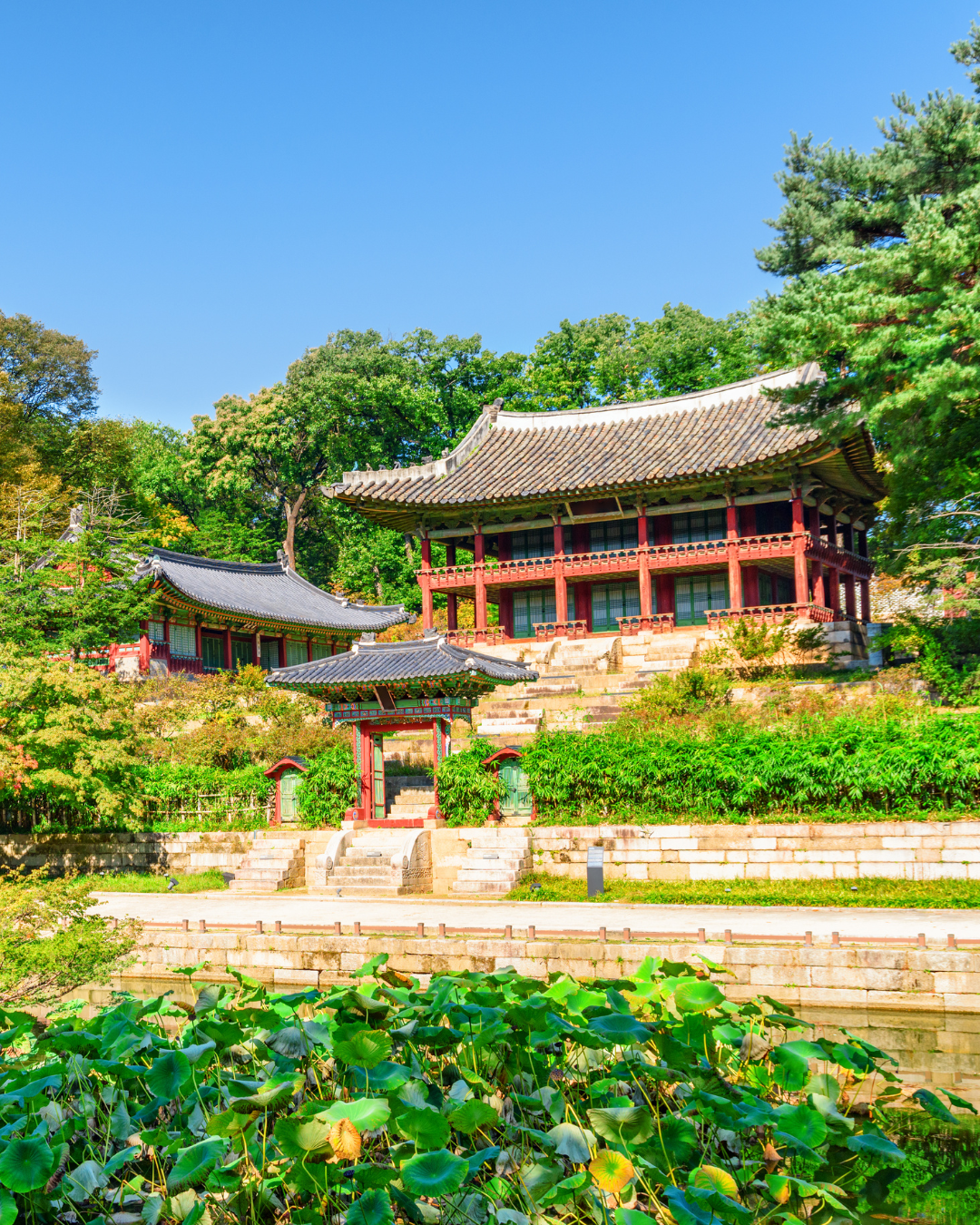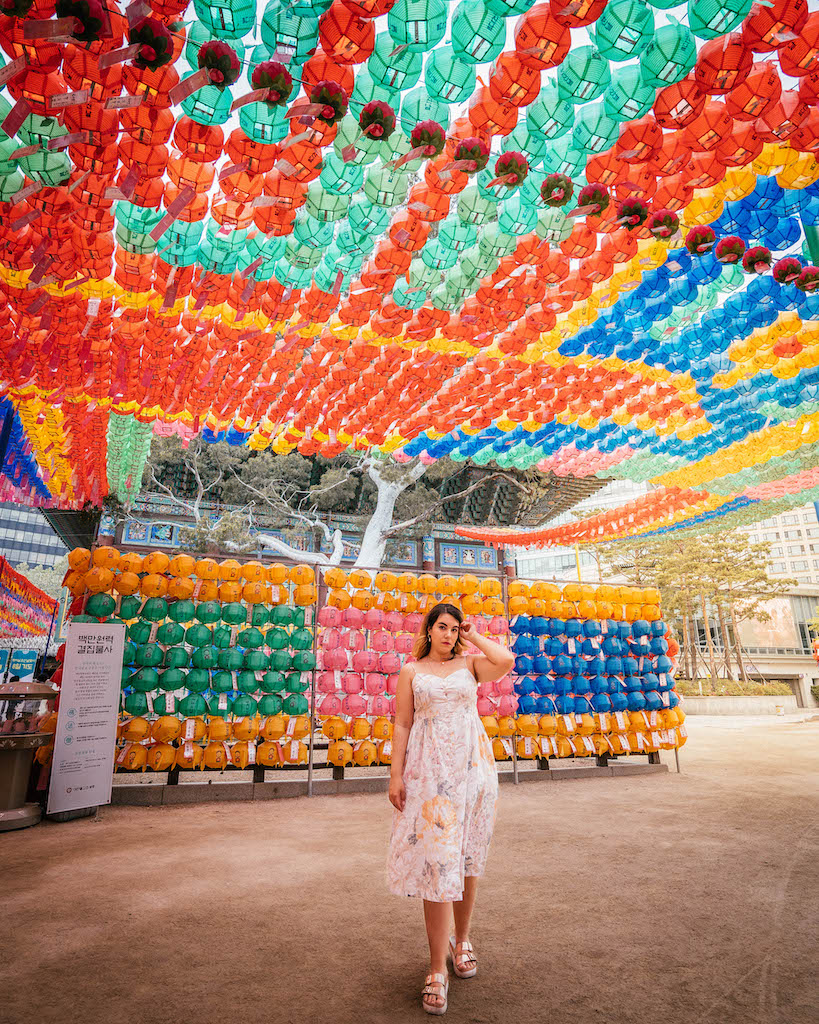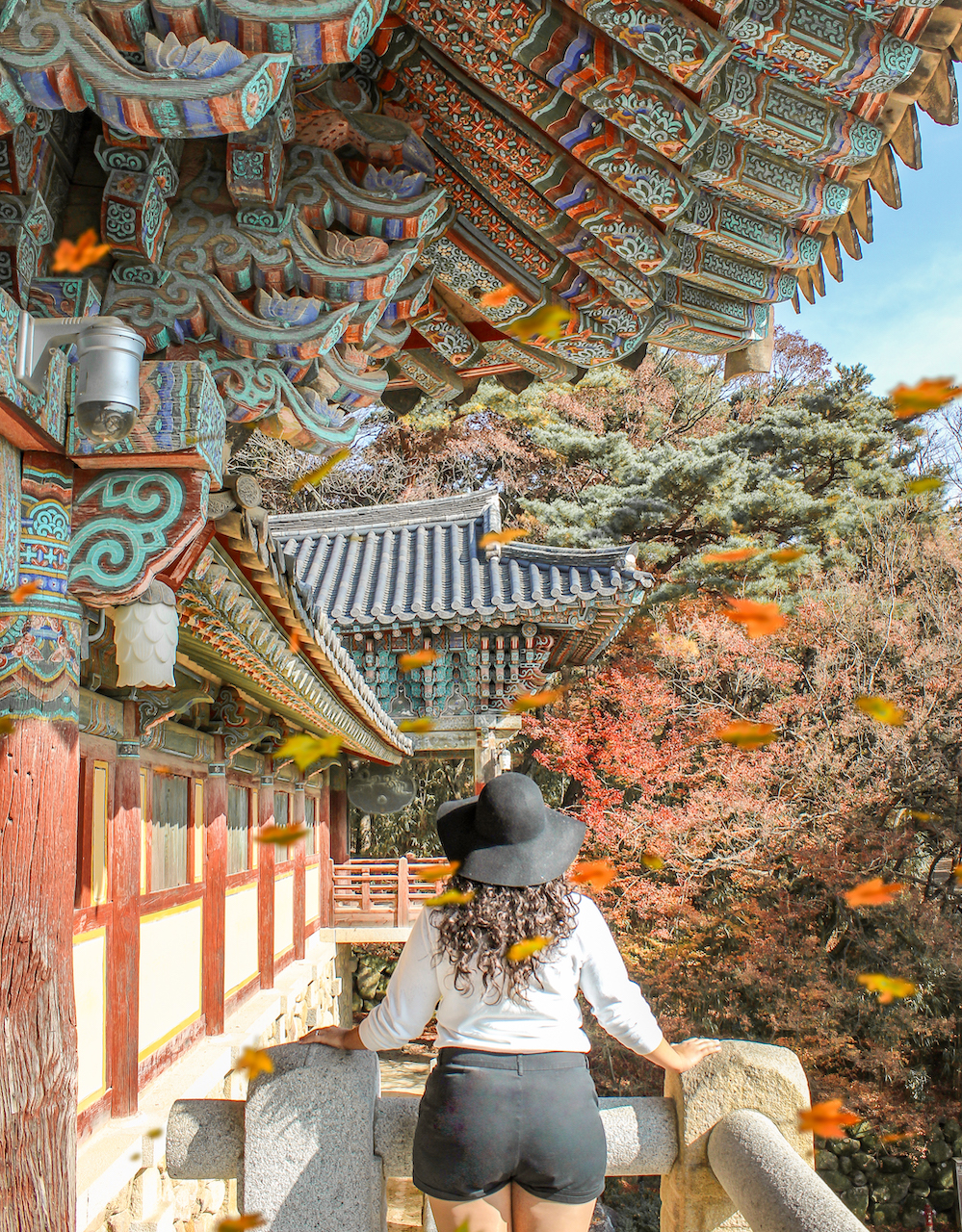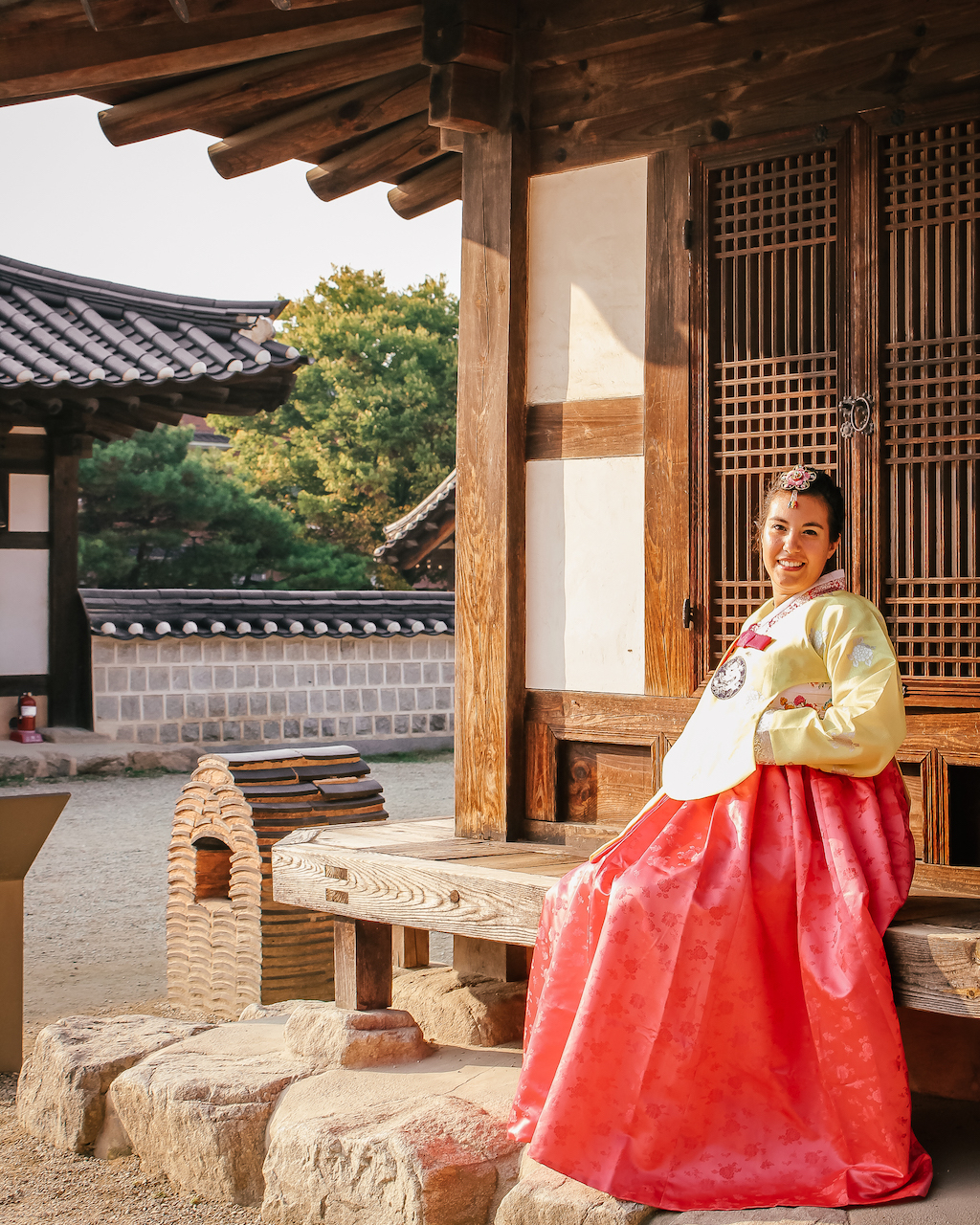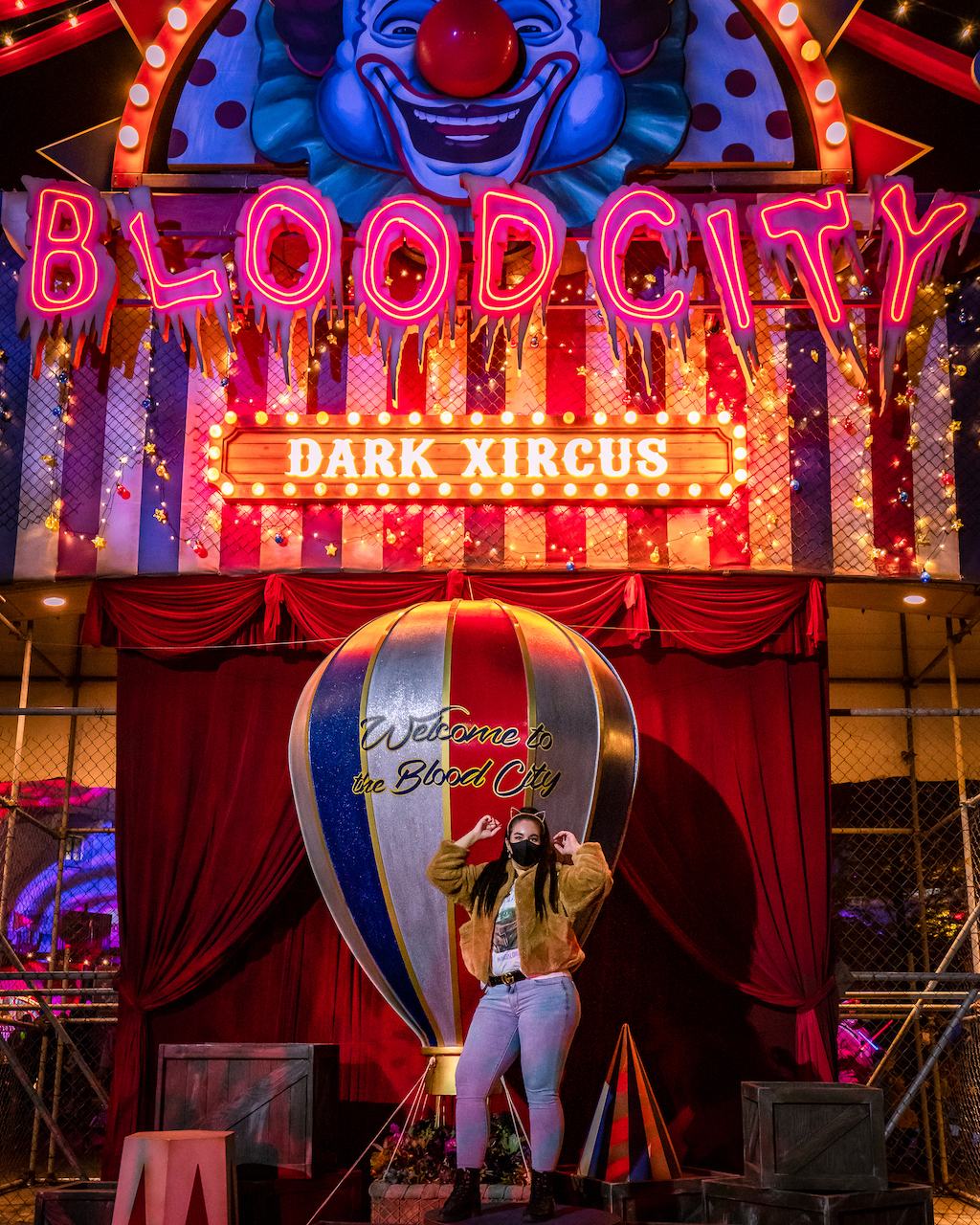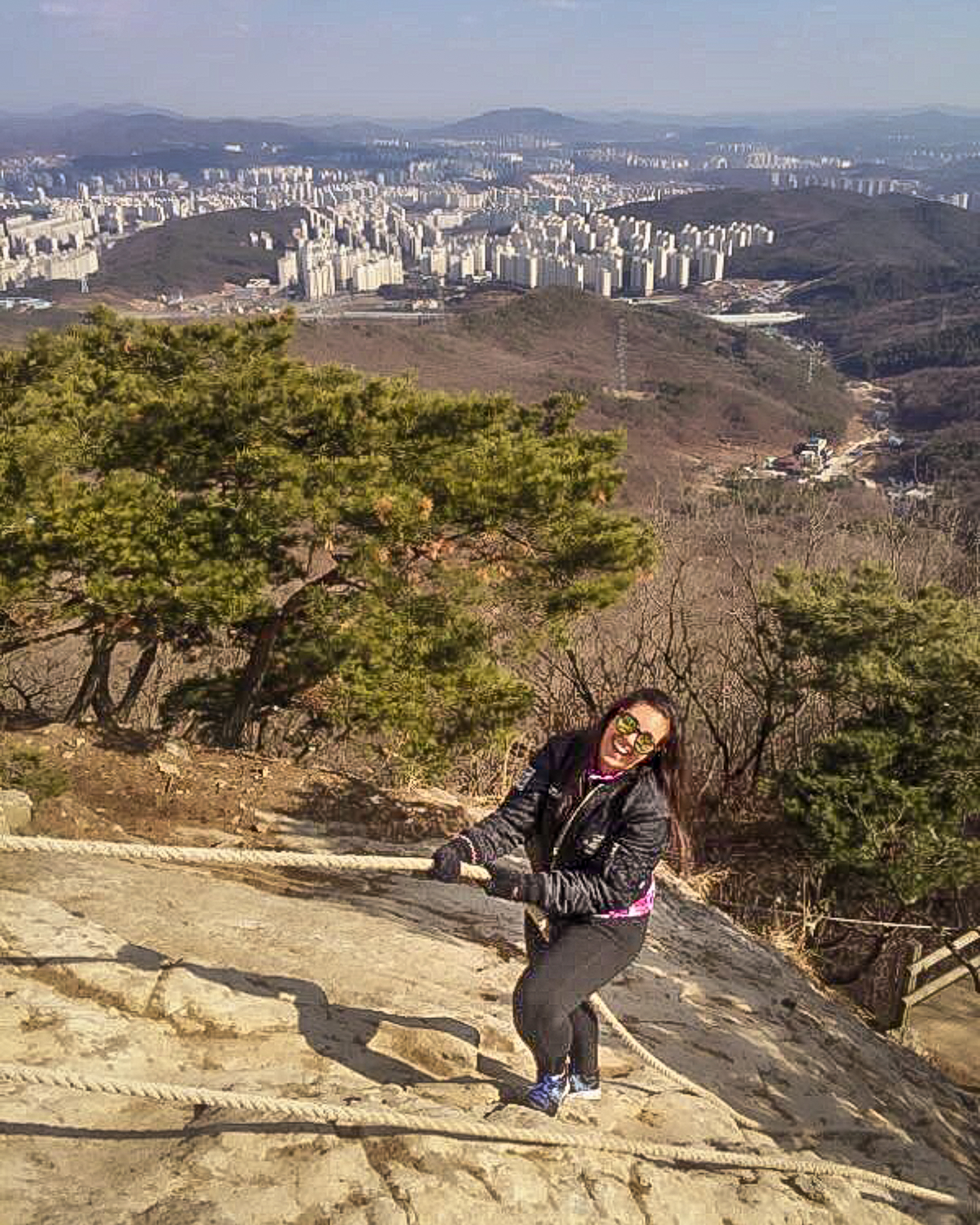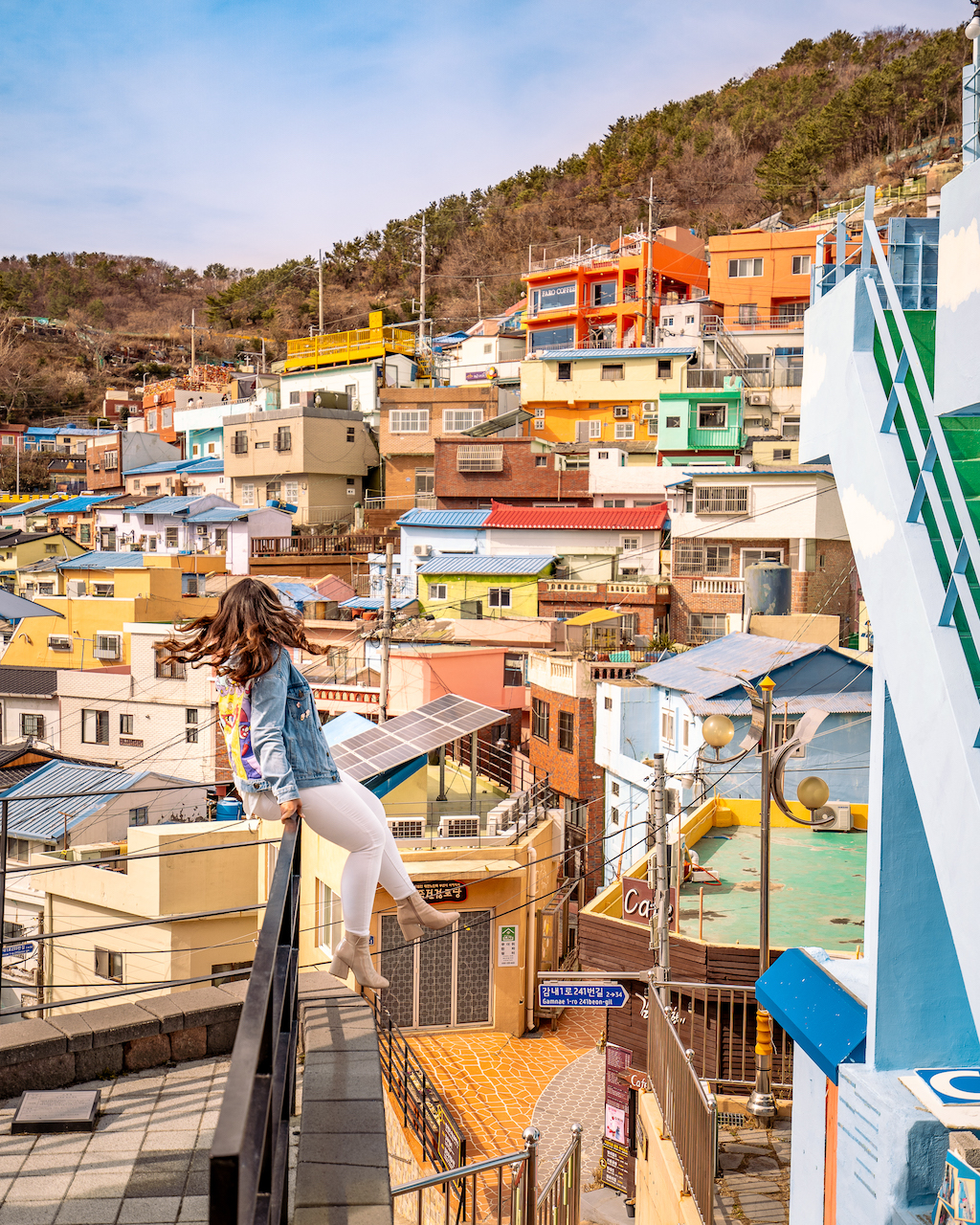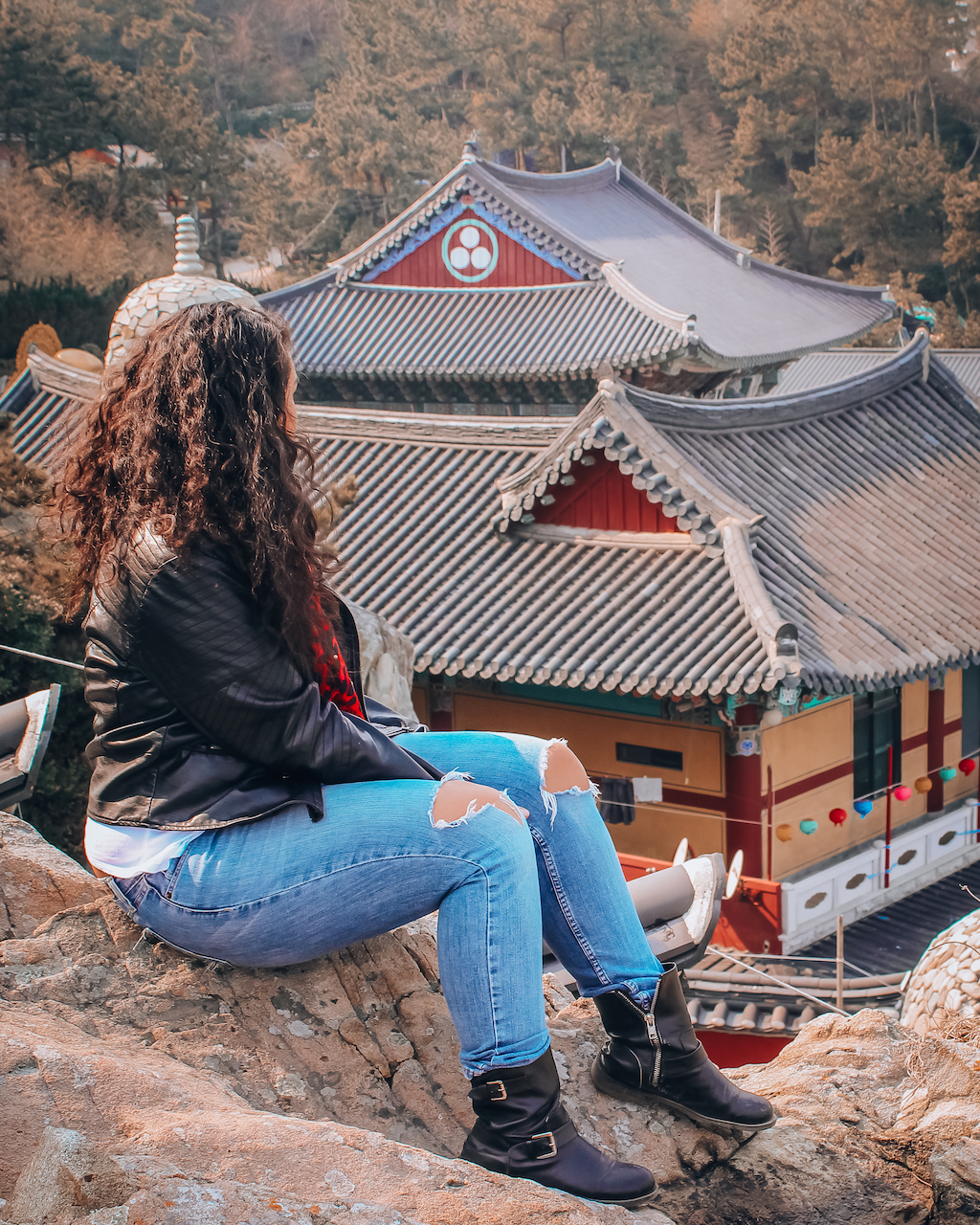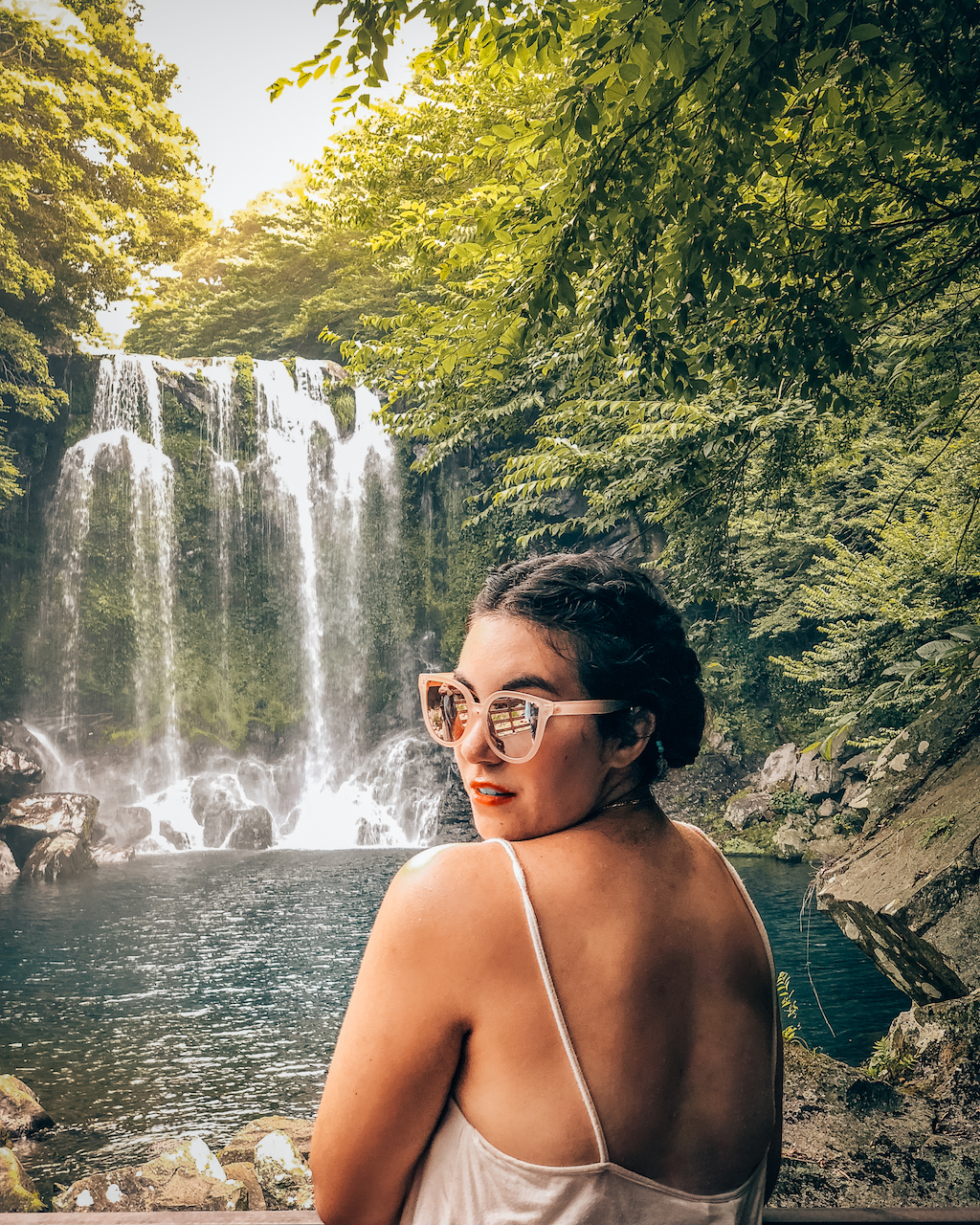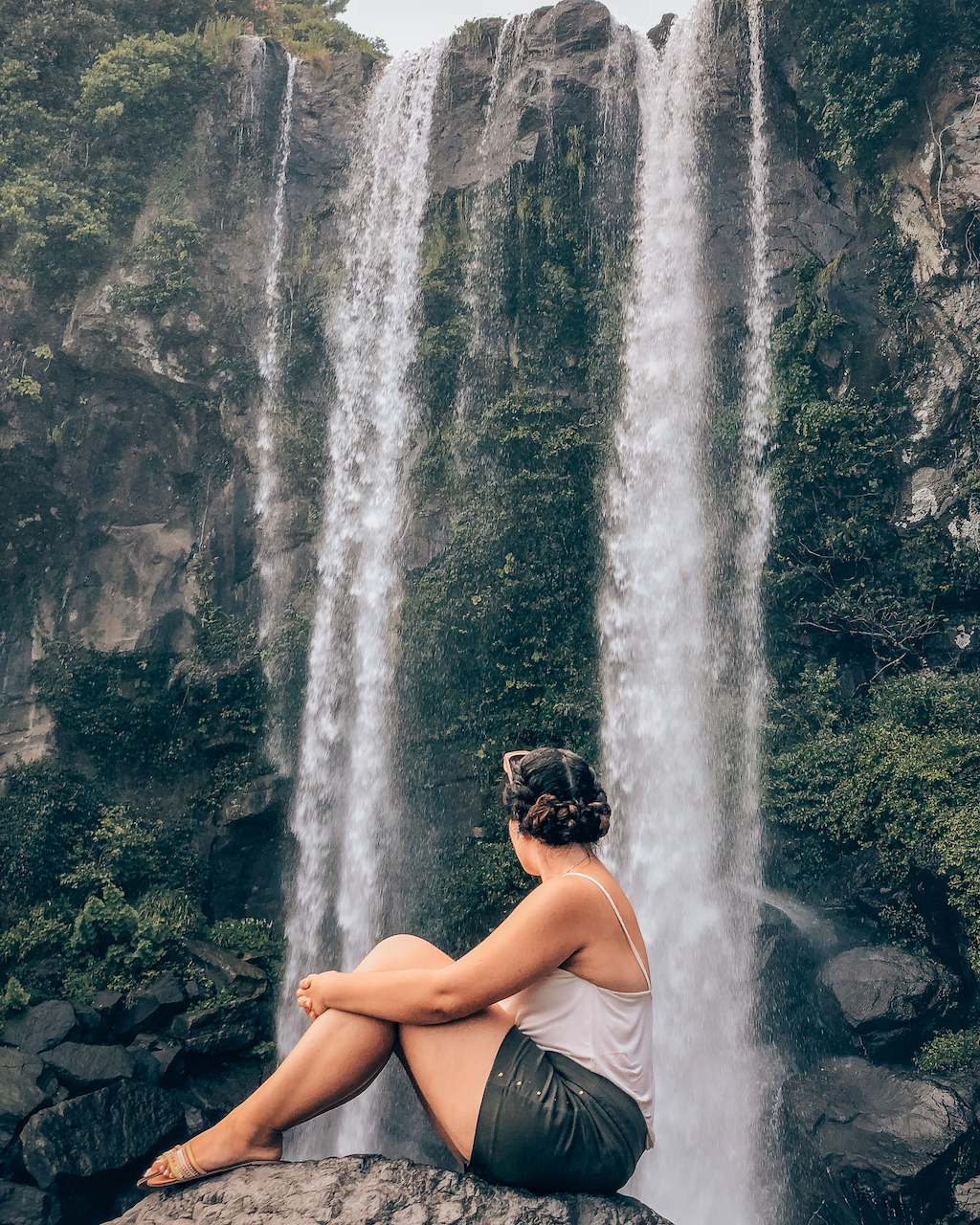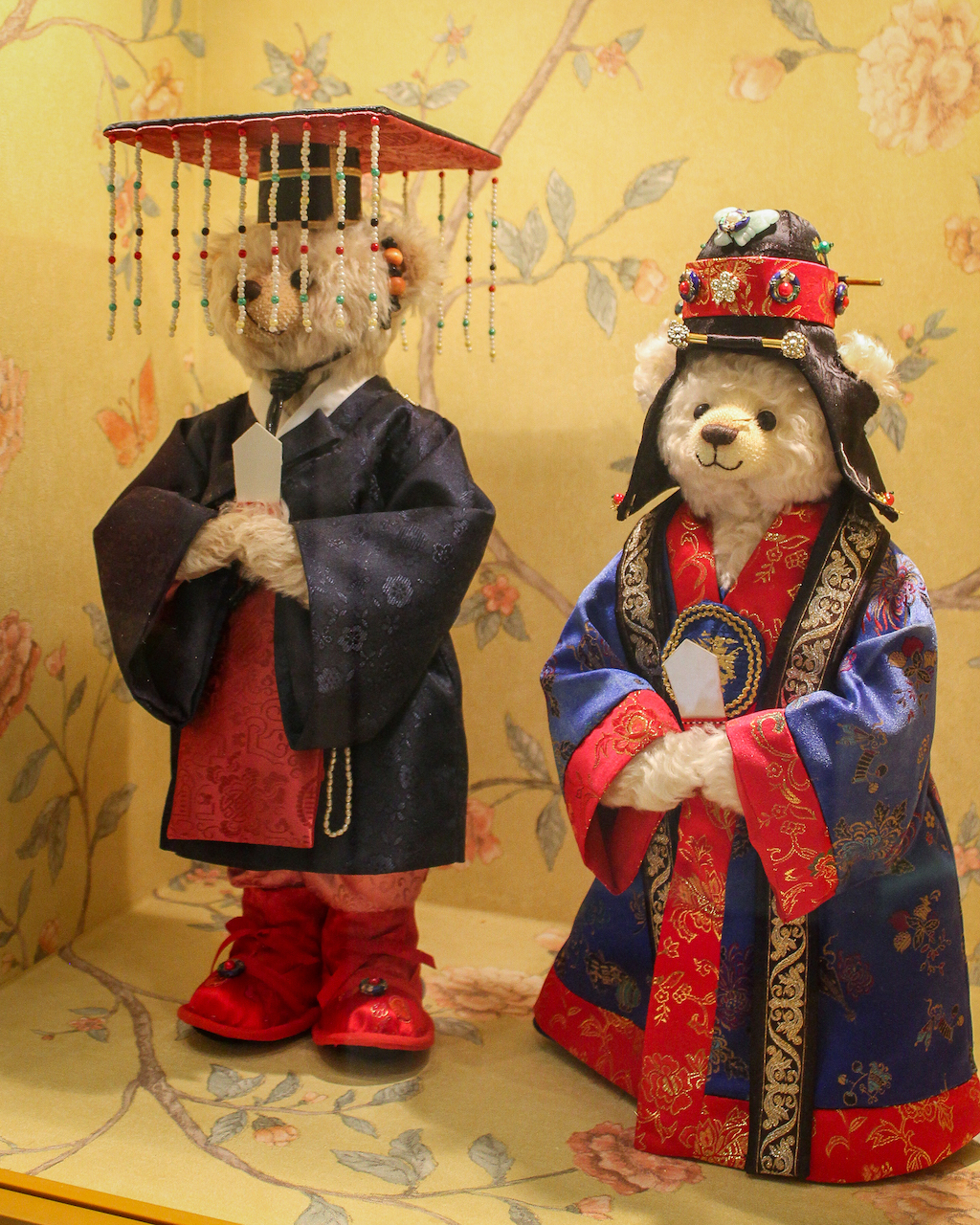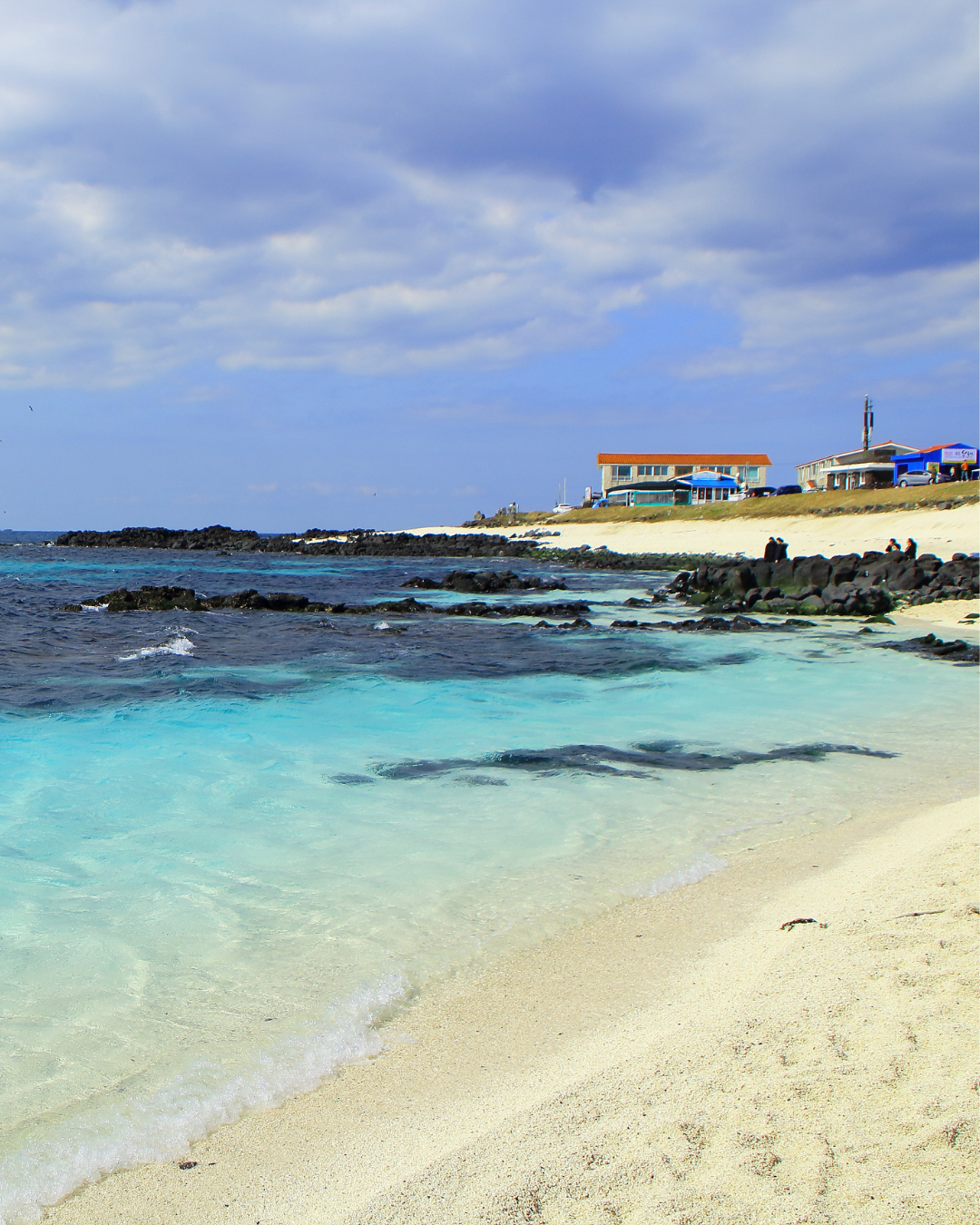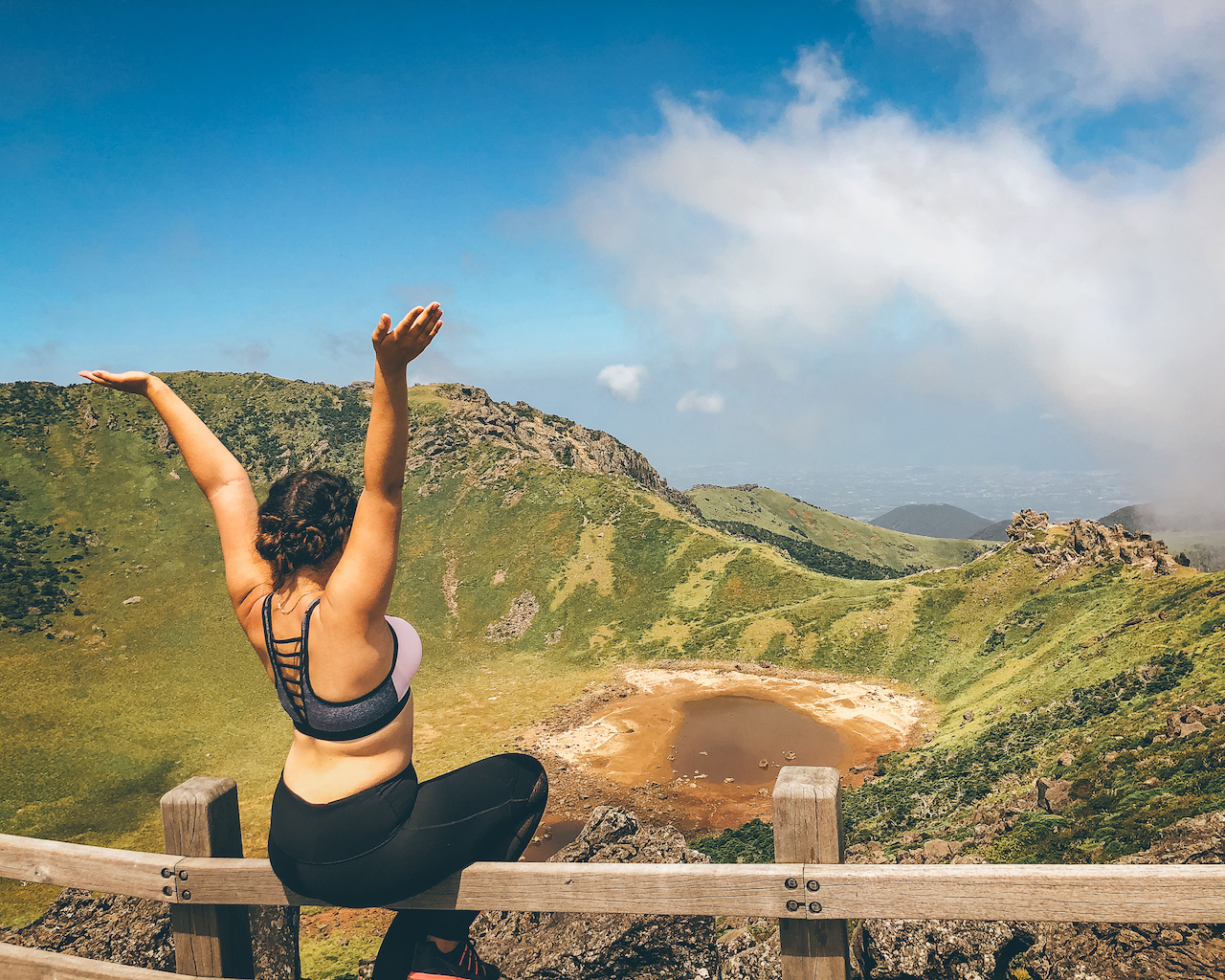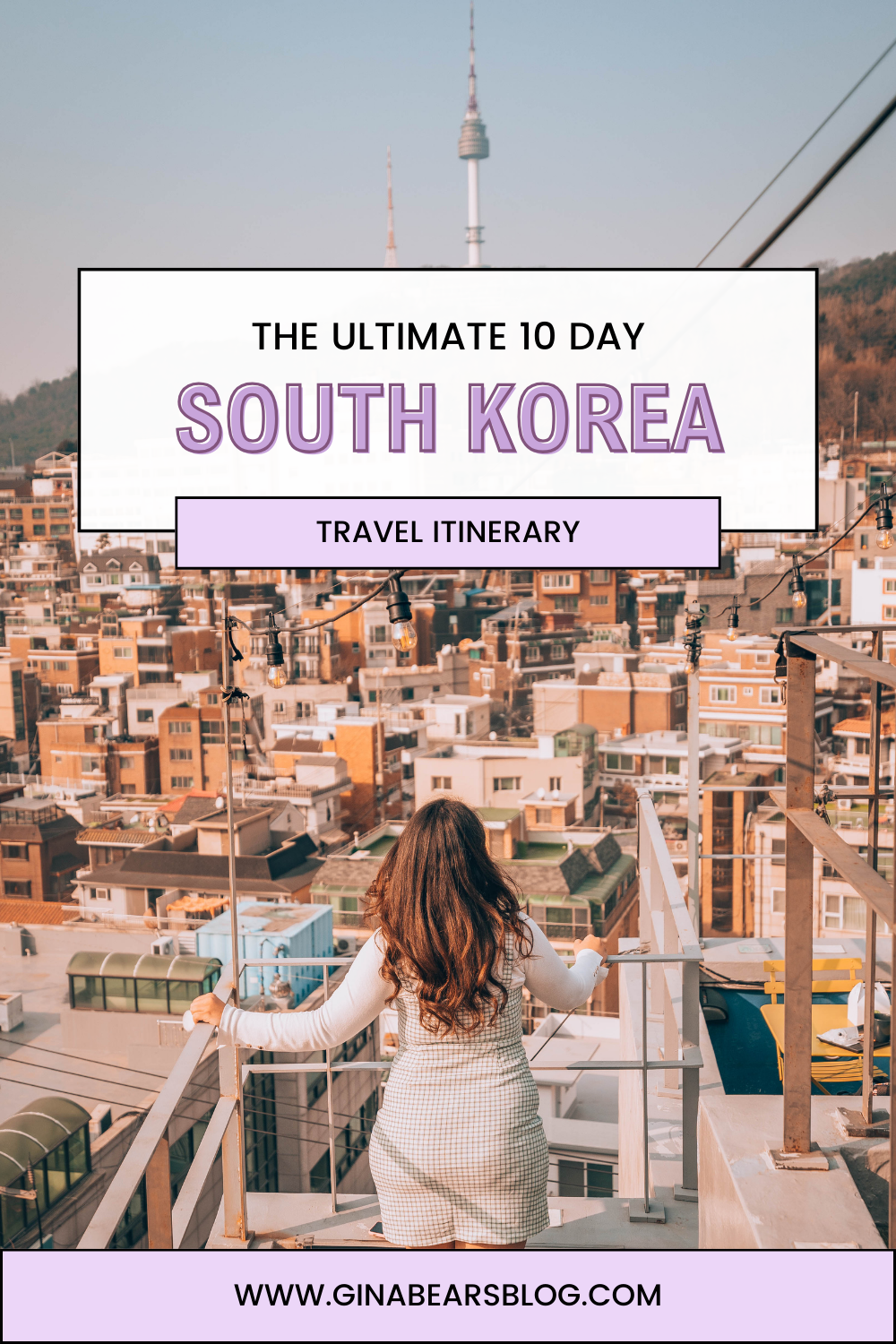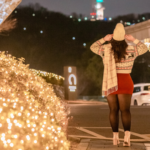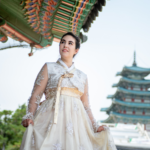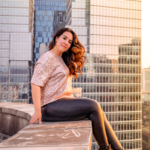After living in Korea for almost six years, I am your Korea trip expert. This is going to be the most comprehensive 10 Day South Korea Itinerary you’re going to find on the internet. I know what I’m talking about because I’ve personally experienced the Korean language, culture, and society.
The Korean peninsula is one of the most beautiful places you’ll ever encounter. I personally love East Asia (as I lived in both Japan and South Korea). The best thing about South Korea is the ease of being able to get to different parts of the country.
Table of Contents
Blog Posts You Might Like
When Is The Best Time To Visit South Korea?
There’s always something happening in Seoul no matter what season you visit. The perfect time to travel spring for all the amazing cherry blossom festivals and autumn for the incredible fall foliage.
Spring in Korea
Korea in spring brings all the beautiful flowers. Since cherry blossom season in Korea is so short you have a very short window to catch them all. In addition, you can visit many different Korean spring flower festivals. Also, shop for the coveted Starbucks Cherry Blossom collection because it sells out super fast. The temperature during this time is comfortable, but prices are more expensive since many Asian holidays happen around this time of year.
- Spring in Seoul | What To Pack for Spring in Korea
- The Best Korean Spring Festivals
- The Ultimate Guide To Spring in Korea
- Where To See Cherry Blossoms in Seoul
Summer in Korea
Like everywhere around the world, Korea in summer is peak tourist season. The best time for Korea summer travel is June and September. July and August bring rainy season so expect to be very moist. recommend visiting Jeju Island as it is perfect to hit the beach and have a cheap staycation.
- Summer in Seoul | What To Pack For Summer in Korea
- The Ultimate Guide To Summer in Korea
- What To Do During Rainy Season in Korea
Autumn in Korea
Korea in autumn turns trees bright colors of red, yellow, and orange. September in Seoul still sees many tourists but starts to trickle out in October and November. Fall is shoulder season in Korea as it doesn’t see many tourists. Chuseok (Korea’s Thanksgiving) is around this time. Everything shuts down as Koreans travel back to their hometowns to celebrate with their families. I recommend doing a lot of hiking in Korea’s mountains and traveling to traditional cities like Gyeongju for the best fall in Korea experience.
- The Best Autumn in South Korea Festivals
- The Ultimate Guide To Autumn in Seoul
- Seoul in Fall | What To Pack To Korea in Autumn
Winter in Korea
Believe it or not, winter in Korea is a great time to visit. Flight prices drop except for around Christmas. Visit early December when the Christmas displays and illuminations decorate Seoul. The Lotte World Theme Park and Everland offer foreigner discount tickets. There are also incredible Korean winter festivals to check out.
- Cool Winter Festivals in South Korea
- The Ultimate Guide To Christmas in Korea
- The Ultimate Guide To Winter in Korea
- Winter in Seoul | What To Pack For Korea in Winter
Before You Visit Korea
A trip to the other side of the world takes careful planning and consideration. In this section, I’m going to break down what to pack, apps you need for Korea, and how to get a sim card.
How To Book a Flight To Seoul
Korea high season travel is from June to July. Plane tickets are most expensive during these months. The cheapest month to fly to South Korea is in March. A flight to South Korea from Los Angeles is typically about 13 hours and 30 minutes. (It’s a pretty long distance, but totally worth it.)
What To Pack For Korea
I highly recommend packing as light as possible so that way when you buy all of your favorite Korean products, there will be room in your suitcase. My favorite travel suitcase brand is Béis. I’m obsessed with their weekender bag, carryon, and checked luggage. Use my code for $15 off your first order and 150 points toward your new account.
I also have an ultimate guide for what to pack to Korea in every season.
Travel Essentials For 5 Days Itinerary In Korea
- Korea travel adapter – Korea uses 220V plugs. Daiso has them for 5,000 won.
- Unlocked phone – Book a simcard before you visit Korea and pick it up at Incheon Airport.
- USB power strip – This is great for charging multiple electronics at once.
- Air Filter Mask – The air pollution in Korea is bad, and on its worst days can be on par with China.
- World Nomads Travel Insurance – Give yourself the peace of mind. Many travel insurance companies have flexible COVID-19 cancelation plans.
- Toothpaste – Korean toothpaste sucks. I don’t like it and it doesn’t leave my mouth feeling clean. Bring your own from home.
- Important documents – Bring copies of any important medical documents and a copy of your passport. Leave one copy on your fridge just in case.
- Your passport – This should be a given, but please don’t forget it.
- Credit Cards/Debit Cards – There are ATMs all over Korea and most places accept credit cards.
- Medication – TSA allows you to bring essential medication in your carryon.
Apps You Need To Download For South Korea
Your 5 days in South Korea itinerary will be so much more complete with apps to make your life easier. These were the apps I personally have used to make my day to day life easier.
- Naver Maps – This is your one and only warning. GOOGLE MAPS DOESN’T WORK IN SOUTH KOREA.You need to use Naver Maps which is available in English.
Naver Maps for iPhone | Naver Maps for Android - Kakaotalk – If you want to connect with some cool people you’ve met in your travels, Kakaotalk is the best way to do so.
Kakaotalk for iPhone | Kakaotalk for Android - Kakaotaxi – This app makes it easy to call taxi drivers. The starting fee for taxis is about 3,000 won.
Kakaotaxi for iPhone | Kakaotaxi for Android - KakaoMaps – This is very similar to Naver Maps so just choose one. I recommend downloading both because sometimes you’ll get address links for this app too.
KakaoMaps for iPhone | Kakaomaps for Android - Kakaometro – Have you noticed there’s a trend here with Kakao? They’ve made some pretty amazing apps and this is also great for navigating the subway. Similar to Subway Korea, you’ll get train times, arrival information, and train transfer data.
Kakaometro for iPhone | Kakaometro for Android - Subway Korea – This is one of my favorite apps for navigating the subways. It will give you the times the train will come, what time you’ll arrive at your destination, and which car to sit in for easy transfers.
Subway Korea for iPhone | Subway Korea for Android
South Korea Sim Card
South Korea has insanely fast internet fast and free Wifi everywhere. I do recommend you get a sim card so you can connect to Wifi in the subway. There are 3 major carriers in South Korea—KT, SK Telecom, and LG U+. You can easily book a physical South Korea sim card here. Your options range from 1 day to 30 days. You will get unlimited data with this purchase and you can add on a phone number and minutes to call.
Get An E-Sim Card for South Korea
One of the coolest things I discovered in my travels is the beauty of an E-Sim card. Why is it so great? It gets downloaded directly to your phone and is activated immediately. This works best if your phone is unlocked. You can purchase an E-sim card for Korea here.
Get Pocket Wifi
If your phone is locked and you’re unable to switch sim cards out, the next best option is to rent pocket wifi. This is also great if you’re traveling with a friend or have multiple devices to connect. Book your pocket wifi here.
Book The Discover Seoul Pass
One of the cheapest ways to travel Seoul is by investing in the Discover Seoul Pass. You can choose the digital card or physical one. The pass doubles as a T-Money card which can be used on public transport like subways, buses and taxis. It can be topped off in any convenience store and train station kiosk. Plus, it comes in increments of 24, 48, and 72 hours. The Discover Seoul pass grants you free entrance into Korea’s top attractions.
Worried About The Korean Language Barrier?
A language barrier may seem scary during 5 days in South Korea. These apps, products, and courses are all things I’ve used and tested myself.
- Google Traslate – This is a free app where you can put in your mother tongue and target language. You can also take photos and Google will translate.
Google Translate for iPhone | Google Translate for Android - Naver Dictionary – Naver Dictionary is more precise than Google Translate because it was made as a language learning tool for English.
Naver Dictionary for iPhone | Naver Dictionary for Android - Papago – A free app developed for Koreans. I often used it to help translate difficult sentences and phrases.
Papago for iPhone | Papago for Android - 90 Day Korean – If you’re planning a trip months in advance, check out 90 Day Korean. Their course is set up to have a 3 minute conversation with a native speaker of Korean after 90 days.
- How To Learn Korean Easily – This blog post covers all the resources I used to learn and study Korean. You’ll get a list of my favorite tools, websites, books, and apps.
Pocketalk
The Pocketalk is a super cool device as it translates 82 different languages in real time. It even has a text to translate camera. This is great for helping you navigate around Seoul. What I like most is its small enough to fit in your pocket or in your purse. You can buy your Pockettalk here.
World Nomads Travel Insurance
Sadly, COVID-19 is here to stay and now a daily part of life. I recommend booking World Nomads Travel Insurance. With the World Nomads Travel Insurance, you can expect:
- Trip Cancelation – This benefit helps you recover non-refundable, pre-paid trip costs when you have to cancel your trip for a covered reason, including for an unexpected sickness that keeps you from traveling.
- Emergency Medical – The only thing worse than catching COVID-19 is getting infected away from home. If you get sick with COVID-19 or another illness, you can get diagnostic tests to confirm your case and other emergency medical benefits.
- Medical Evacuation – If you’re in an inadequate medical facility, our plans have benefits that can arrange a transfer to a hospital capable of treating your medical needs.
- Trip Interuption – During your travels, you might have to return home early. With trip interruption, you could get reimbursed for a one-way, economy-class ticket home and any pre-paid, unused portions of your trip if you need to change your plans for a covered reason.
- Trip Delay – Even when there isn’t a pandemic, traveling can have its bumps and hiccups. If your travels are delayed at least six hours by a covered event, you can be covered.
Arriving in South Korea
You’ll arrive at Incheon International Airport. It is very easy to get to central Seoul from the airport.
If you didn’t book the Discover Seoul Pass, then you should get a T-money or Cashbee card at the convenience store. Or you can book a digital T money card online here so you don’t have to deal with it when you arrive. These are basically reloadable public transport cards. They cost 5,000 won and you can reload the card at any train station kiosk or at the convenience store.
How To Get From Incheon Airport to Seoul
Getting To Seoul By Train
If you take the train, there are two ways to get to Seoul. One is by the all-stop train (which takes forever) and the Express Train. You can check the airport train schedule here.
- Express Train – The Express Train travels non-stop from Incheon Airport Terminal 1 Station and Terminal 2 Station to Seoul Station. To take this train, passengers must purchase an Express Train Pass (or have the Discover Seoul Pass). A discount is available to passengers who present flight tickets from Jeju Air, Korean Air, Asiana Airlines, or T’way Air.
Cost: 9,500 won adults | Runs: every 43 minutes - All-Stop Train – The all-stop train makes stops at all subway stations from Incheon Airport Terminal 1 and Terminal 2 Stations to Seoul Station. Six of the subway stations allow transfers to other metropolitan area subway lines. To take this train, passengers must use a transportation card. International visitors may also use the foreigner-exclusive prepaid transportation card MPASS.
Cost: 4,150 won | Runs: every 59 minutes
Getting To Seoul By Airport Bus
Airport buses run from Incheon International Airport to many areas of Seoul. Tickets can be purchased at ticket booths just outside the 1F Arrivals Hall of each terminal. Detailed inquiries on bus routes and bus stops can be made here.
- Check bus routes and purchase tickets at the ticket booths located at the Arrivals Hall (1F) of Terminal 1 near Gates 4 & 9 or outside by Gates 4, 6, 7, 8, 11 or 13.
- Tickets at Terminal 2 can be purchased from the bus terminal at the Transportation Center (B1F)
- Check the bus boarding number indicated on the ticket.
- Go to the bus boarding location and double check the bus route and departure time.
- Once aboard the bus, listen carefully to the English announcement for your stop.
There’s help kiosks located all around the airport if you get lost or have a question. You can also check the Incheon Int’l Airport Bus Guide (Korean, English, Japanese, Chinese).
Getting To Seoul By Private Transfers
There are different kinds of taxis that can take you into Seoul.
- Regular Taxi – Base fare begins at 3,800 won (Seoul standard) with a 20% increased charge from the base fare at nighttime (24:00-04:00).
- Deluxe & Jumbo Taxi – Base fare for deluxe and jumbo taxis begins at 6,500 won. There is no additional nighttime charge.
- International Taxis – International taxi fares are fixed according to region with regular taxi fares ranging 65,000 – 90,000 won, and deluxe and jumbo taxis run from 95,000 – 130,000 won.
Pro Tip: If a taxi driver tries to take advantage by demanding an inflated fare, report the incident to Seoul Global Center (+82-2-2075-4180), which offers services in English, Japanese, Chinese, Russian, Vietnamese, Mongolian, Filipino, Uzbek, and Thai. You can also report your complaint to the Dasan Call Center (+82-2-120), which offers services in English, Japanese, Chinese, Vietnamese and Mongolian.
How To Get Around Seoul
- Subway: The subway is owned by the government so the fares for each line are standardized. Fares start at 1,250 won and cost about 100won – 300won to transfer to another line. The trains run all day, but are closed from midnight to 5:30am.
- Bus – If you’re a first time tourist to Seoul, I would avoid taking the bus; however, if you’re up for the challenge, use Naver Maps. It will tell you where the bus stop is and the bus stops also have information about when the next bus will come. It also costs 1,250 won to get on the bus and 100won – 300won for transfers. If you find yourself stranded without a subway, then you can ride the M Buses at night.
- Taxi – The base fare starts at 3,000 won and goes up from there. They’re a little more expensive to ride at night, but they are available 24/7.
- Seoul Bike – These are public bicycles that can be found all over Seoul. It costs 5,000 won to rent for the day. For more information and a comprehensive guide on how to rent, click here.
- Electric Scooters – There’s a lot of walking in Seoul, but luckily there are a lot of bike paths as well. There are three companies you can rent an electric scooter from in Seoul—Lime, Beam, and Kickgoing (Korean only). Korean law requires you to scan your driver’s license before renting.
Safety in South Korea (10-Day Itinerary South Korea)
South Korea is a very safe country for solo female travelers. Just be aware crime still happens despite the safety ratings. According to Global Finance, Korea has a safety index score of 8.93. This means you will find CCTV everywhere and Koreans in keeps themselves in check. One of the things I enjoy most is being able to leave my valuables on a table and no one will try and steal it.
Where To Stay in Seoul
Check out my post on Where To Stay in Seoul for a detailed guide on booking accommodation in South Korea. You’ll get recommendations for every budget and what each area offers. However, if you’re in a hurry, here’s a mini Seoul city guide.
- Gangnam– Best area to stay in Seoul for luxury travelers.
- Hongdae– For budget travelers to find a cheap hotel room, night life lovers, and foodies.
- Insadong– Traveler who love culture and unique Korean experiences will thrive here.
- Itaewon – For those who don’t want to stray far from home comforts.
- Jamsil– Perfect for families and low key travelers.
- Myeongdong – This is the best neighborhood for Korean food, skincare, and clothes.
Day One in Seoul (10-Day Itinerary South Korea)
For your first day of this 10 day South Korea itinerary, bring your best pair of sneakers because you’ll be doing a lot of walking in the capital city. The pavement is often uneven your gym shoes will protect you from accidents.
Rent a Hanbok at Hanboknam
I recommend experiencing Korean culture and Korean history. One of the best ways to do this is by renting hanbok. A hanbok is a traditional Korean dress. For everything you need to know about renting hanbok in Seoul, click here. Did you know you can get free admission into all the royal palaces by wearing hanbok?
Hanboknam provides hanbok up to a US size 16. The larger sizes leave much to be desired in terms of how pretty they are. In addition, they do have shoes available to rent if you can fit. The largest they go up to is a US size 8. You can book your Hanboknam hanbok rental here.
Gyeongbokgung Palace
This is the most beautiful of the palaces and was the main palace during the Joseon Dynasty. A Seoul travel hack is to get the Discover Seoul Pass. If you’re one of those travelers that has to do everything, then I promise you’re going to get the most bang for your buck.
This pass includes a free hanbok rental at Hanboknam. You can also use it to enter Gyeongbokgung without having to wait in the long ticket lines. While at Gyeongbokgung, visit the National Palace Museum of Korea to learn about Korean culture and rich history. The palace grounds are huge, but they’re beautiful.
Insadong
Insadong is best for buying souvenirs and local artwork. It’s the only street featuring exclusively Korean signs and no English. You’ll also find very tasty traditional Korean food for cheap. My favorite restaurant for tasty Korean food is called Insadong Geujip. During peak tourist season, you can also find a lot of Korean traditional acts performing on the street from sword fighting to dancing. It’s close to Ikseondong which is about a seven minute walk.
What To Do in Insadong?
- Color Pool Museum
- Make a Traditional Korean Name Stamp
- Korean Rice Wine (Makgeolli) Tasting Tour
- Insadong Half Day Food Walking Tour
Ikseon-dong Hanok Village
Ikseon dong should be on your to-do list. This is a really trendy hanok village with amazing cafes, restaurants, boutiques and entertainment. It really gives you that old Seoul feel while walking around the narrow alleys. At night, it’s also a great place to go drinking and to eat Korean bbq at a local restaurant. For a full guide on everything you need to do in Ikseondong click here.
What to do in Ikseondong?
It’s really easy to spend a good chunk of your afternoon walking around the Ikseondong Hanok Village. Take your time to explore all the great cafes and views the area offers.
Have A Drink At Moxy Hotel’s Rooftop Bar
Your Seoul itinerary should include at least one rooftop. I went here for my birthday and you get the most amazing view of the Ikseondong Hanok Village. This is also a really fun place to stay with all of its fun and modern decorations. Book your stay at the Moxy Ikesondong here.
Day Two in Seoul
Next on our itinerary in Seoul, we’re going to visit more historical sites. Even though a lot of the traditional Korean places are located in one area, it’s still a lot of walking. Also, you’re going to want to take your time and learn about Korea’s history, culture, and take amazing photos.
Changdeokgung Palace
This is one of the largest palaces in Seoul not because of the buildings, but because of the gorgeous Secret Garden. It’s also a UNESCO World Heritage Site. It costs 3,00 won to enter the palace. Or if you’d like to delve deep into the history and culture of Changdeokgung and the surrounding Bukchon Hanok village, you can do a guided tour.
Secret Garden Tour
This is the highlight of visiting Changdeokgung. The royal family used the garden as a place of rest since the reign of King Taejong (1400 to 1418). They would come here to contemplate life, write poems, and hold banquets.
Pro Tip: Two of the most popular times during the year to visit Changdeokgung are during cherry blossom season and autumn when the foliage makes the garden come alive with gorgeous colors. Book tickets to the garden in advance or during the week at 9am.
Jogyesa Temple
Jogyesa Temple is one of the oldest Buddhist Temples in Korea and a symbol for Buddhism in Korea. It’s located in the heart of the city and is still an active temple today. While you stroll the grounds, you’ll most definitely catch Buddhist services. Just a note, the temple becomes decorated with beautiful and brightly colored lanterns around Buddha’s Birthday.
Bukchon Hanok Village
Bukchon is full of beautiful traditional hanok homes. Hanok are Korean traditional houses. People actually live there, so please be respectful of your surroundings. This is a residential area and people do live here so please be quiet and do not disturb others.
If you want to get a shot like mine with no people, go super early in the morning because it gets crowded fast. One Day Hanbok is also located at the heart of this district so it’s easy to rent a hanbok from them and then take photos here.
- Bukchon Hanok Village Walking Tour
- Kimchi Making Class in Bukchon Hanok Village
- Mother of Pearl DIY Class in Bukchon Hanok Village
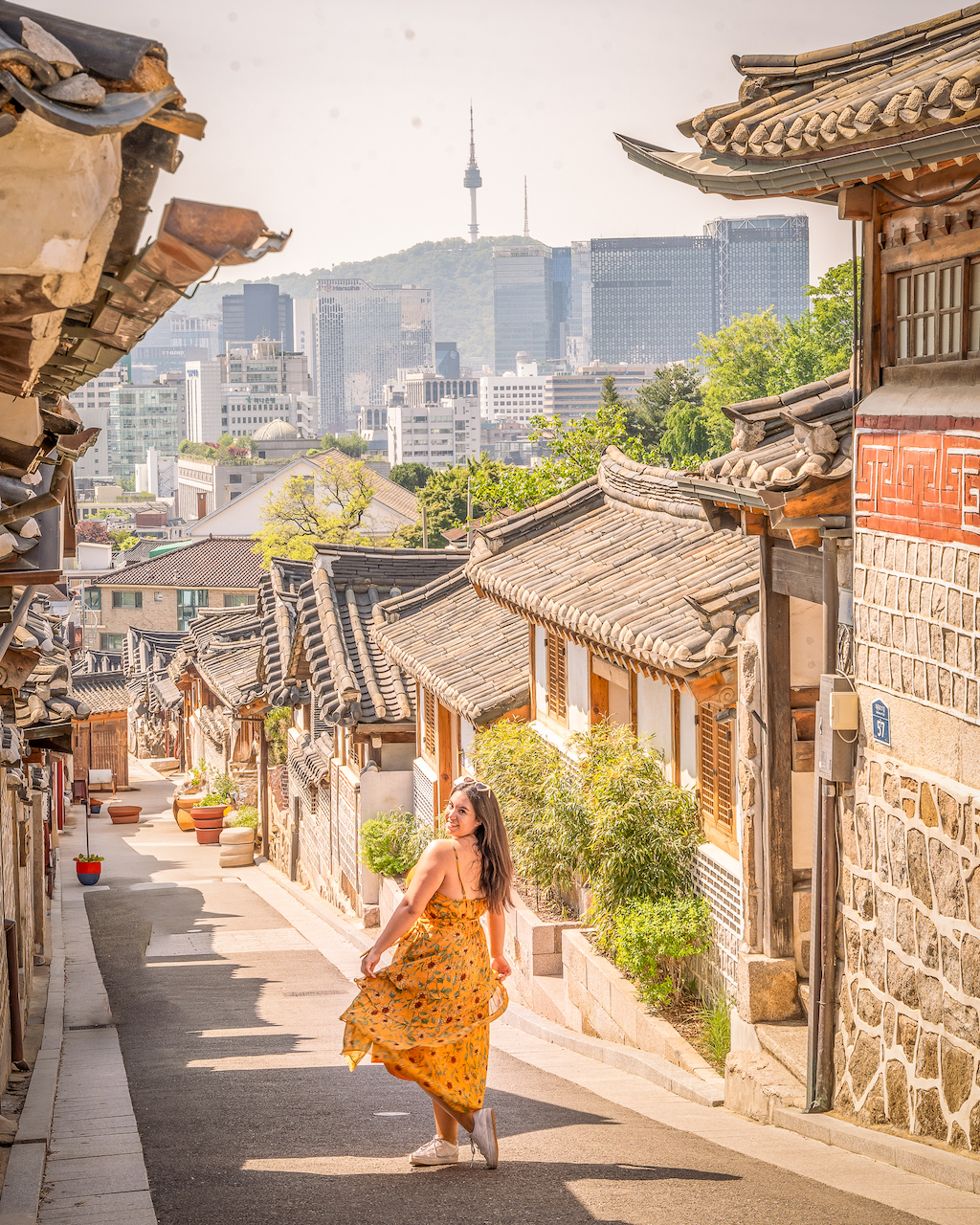
Green Mile Coffee
This is by far one of my favorite coffee shops in the Bukchon area. Their speciality lies in coffee and green tea creations… Which sounds like it wouldn’t go together, but it totally does! It’s a great pick me up and I recommend going around sunset. You can also see the National Folk Museum of Korea from the rooftop.
Optional: Gwangjang Market or Namdaemun Market
These are traditional markets in Seoul. It’s the perfect place to try traditional Korean food. It’s a popular spot for an authentic local food experience in Seoul.
Optional: Nanta Show
This is one of the most entertaining live performances I’ve ever been to… And the best part? You don’t have to know Korean to enjoy this show. They combine cooking with traditional Korean dancing. Book your Nanta Show here.
Day Three in Seoul
Namsan Tower
If you’ve ever watched a romantic Korean drama, then you’ll have seen a scene filmed here. It’s the ultimate couples destination in Seoul. The N Seoul Tower is also known as a complex culture space where the clouds meet Namsan Mountain.
What to do at Namsan Tower?
A few things I recommend are definitely going up the cable car and Namsan Park. You can take a leisurely walk along the city wall from the park and it is amazing for photos. It’s great in all seasons but especially in spring and autumn. There are also two restaurants in the observatory to choose from which makes the experience even cooler.
- Namsan Tower Round Trip Cable Car Ticket
- Namsan Tower Observatory Ticket
- The Place Restaurat at Namsan Tower
- HanCOOK Restaurant at Namsan Tower

Myeongdong
The Myeongdong shopping district is a tourist favorite for the shopping, street food, cute cafes, and Kpop inspired merchandise. You’ll find lots of unofficial Kpop souvenirs in Myeongdong Station. A popular activity is to eat street food. Make sure you try tteokbokki which are spicy rice cakes. Bring cash because the street food vendors don’t do credit or debit cards.
What to do in Myeongdong?
The Myeongdong area is mostly famous for its shopping district but there are so many other cook things to do in Seoul. You can really get a feel for Seoul’s most expensive district by going around to eat street food and taking part in cultural activities.

Han River Picnic
Were you even in Seoul if you didn’t picnic or visit the Han River? One of the top things to do in Seoul is to order delivery to Yeouido Park. The top two contenders are pizza and fried chicken. There are tons of convenience stores around where you can just get a lunchbox and beer and eat anywhere you want. Also, it’s really popular to ride a bike and have a picnic at the Han River.
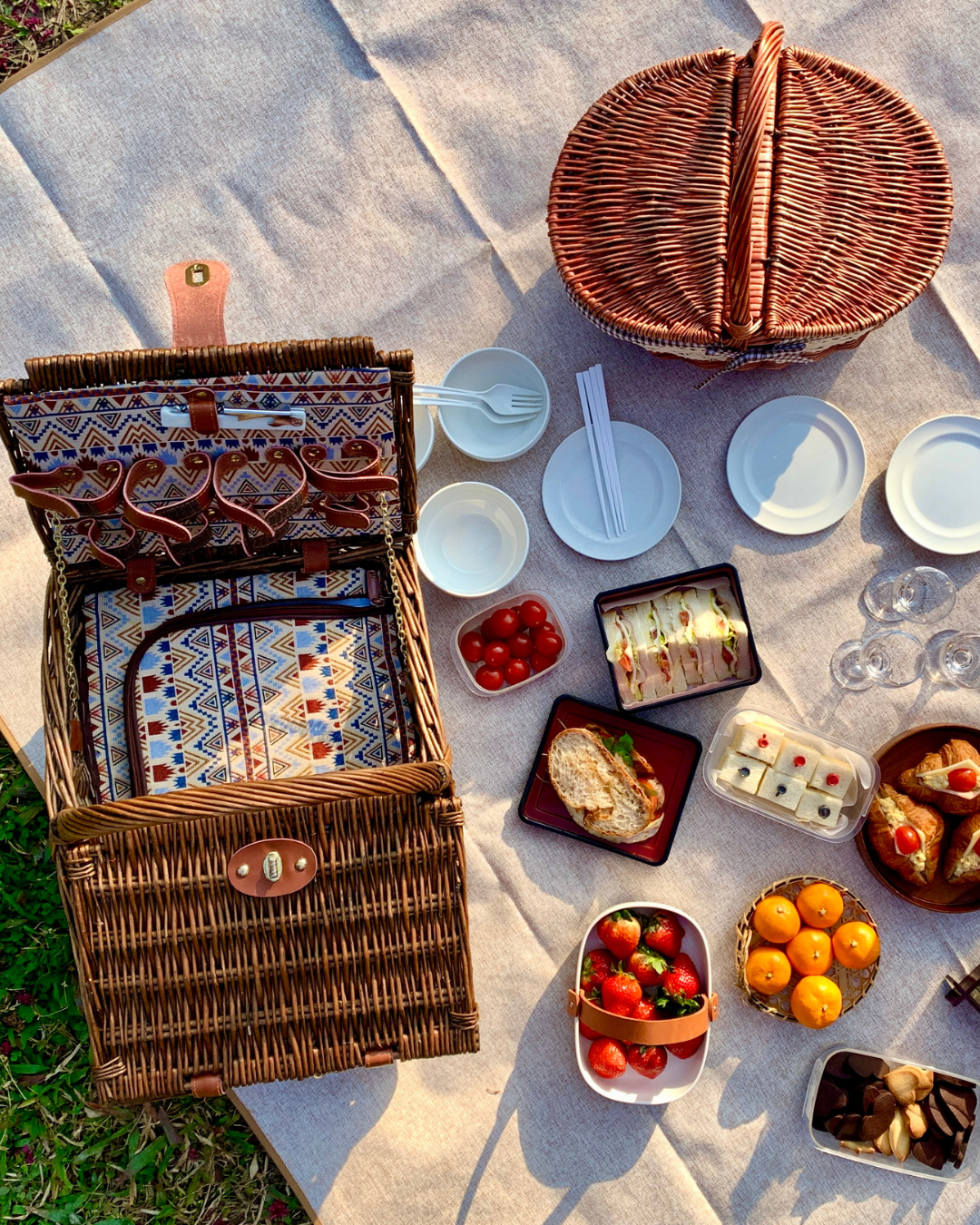
Han River Cruise
Another popular attraction for tourists in Seoul, the Han River Cruise is one of my favorite things to do. If you go on the sunset tour, you can get a drink. You can also watch the city light up. This is a really amazing activity for friends, lovers, or families. You can book your Han River Cruise for a discount here.
Day Four in Seoul | Go On A Day Trip From Seoul
On your last day in Seoul, I recommend going on a trip outside the city. While Seoul is absolutely amazing, you should see other parts of the country. If you’d like more information on all the amazing day trips you can take from Seoul, click here.
Visit The DMZ
Visit the DMZ (Demilitarized Zone) and JSA (Joint Security Area). Whether you’re into history or not, this has definitely been one of the coolest experiences I’ve ever done. You’ll get a chance to tour part of the tunnels the North Korean government made to try and infiltrate Seoul.
The best part is the JSA. This is where President Moon Jae-In and Dictator Kim Jong Eun met for a peace talk. Depending on the day and how high tensions are the JSA may be closed. These cool blue houses are also where you can stand in North Korea during the DMZ Tour. You can book your DMZ and JSA tour here.
Gyeongju Day Trip
Gyeongju was once the capital of the Silla Dynasty and home to many of Korea’s famous historical sites. I also have a completely done for you guide on the Perfect Autumn in Gyeongju Itinerary. I think the best time to visit Gyeongju is during fall and spring. Don’t forget to visit Bulguksa Temple which is a Buddhist Temple and the Seokguram Grotto.
The easiest and most hassle free way to see Korea’s old capitol is to book a one day Gyeongju day trip from Seoul here. One of the best things to do is to a rent (traditional time era hanbok). This is one of my absolute favorite places in Korea because of its rich history.
Jeonju Day Trip
Jeonju is particularly crowded during autumn in South Korea. This traditional Korean town features delicious bibimbap, yummy street food, and one of a kind chocopies. It’s kind of tricky to get down to Jeonju yourself so I recommend this one day Jeonju trip from Seoul here.
You can also rent hanbok for cheap and take loads of pictures with great souvenirs. If you’re a fan of Kpop, don’t forget to check out the Catholic cathedral where Big Bang’s Taeyang filmed Wedding Dress. For more information, check out my Jeonju in Autumn Itinerary.
This was one of the most fun day trips I ever experienced. If you want to get there via public transportation, I recommend you use the KTX Trains. The KTX Jeolla Line will take you to Jeonju.
- Jeonju Cherry Blossom & Spring Flowers Tour (Spring Only)
- Jeonju & Naejangsan Fall Foliage Tour (Autumn Only)
Other Recommended Day Trips
- Everland Amusement Park
- Korean Folk Village
- Namhansanseong Fortress Tour
- Suwon Hwaseong Fortress Tour & Korea Folk Village Tour
- Garden of Morning Calm, Nami Island, Petite France Tour
Go Hiking in South Korea
Three Days in Busan (10 Day South Korea Itinerary)
Next on our 10 day South Korea itinerary, we’re gonna pop on over to Busan which is the second largest city in South Korea. The south coast of Korea is a popular destination in summer. It’s one of the best places for a beach holiday, but is great year round. Three days in Busan is the perfect amount of time for getting a feel for this city. If you’d like to stay an extra day instead, check out my four day Busan itinerary here.
Day One Busan Itinerary
Gamcheon Culture Village
Many people visit the Gamcheon Cultural Village. It is the top tourist attraction in Busan for a reason. The best things about the village are the colorful homes, ecclectic cafes, and super cute boutiques selling trinkets all around. It is a residential area and there is no entrance fee to get in. Please respect the residents and keep your voice down.
Avant Garde Cafe
Insider tip… The drinks are meh, but the views are FIRE. Stopping by this cafe is a great way to capture one of Busan’s main attractions. You will be guaranteed a great view of the Machu Picchu of Korea.
Cafe OceanView
Cafe Oceanview is the best area to view the port city and the Songdo Cloud Trails. I recommend walking around them to get different angles of the city and different viewpoints. It’s very pretty no matter what time of day you go. It’s a new cafe in Busan so here is the Naver Map link to access it easily.
Songdo Cloud Trails
These are really beautiful walking trails along the ocean and where you can see the cable cars. This is a really unique experience and I recommend spending enough time here to soak up the sites.
Huinnyeoul Beach Cafe
What better way to start the day than with some Korean coffee and a great view of the Busan ocean? The cafe has a beach theme. They serve various baked goods like scones and cakes.
Songdo Bay Station
This is where you’re going to catch the Songdo Cable Car after a light lunch at Cafe Oceanview where you can enjoy the natural beauty of the coast. I also recommend going to the Sky Harbor Observation Deck. You can book your tickets with a clear glass floor to the Busan Air Cruise here.
Eat Dinner at Jagalchi Market
I’m sure after a long day of sight seeing you’ll want to settle down and eat delicious food. Jagalchi Market is Korea’s largest seafood selling market. You can find both live and dried fish here. There are food stalls where visitors can eat fresh raw fish right at the market. The Jagalchi Ajhumma sell mackerel, sea squirts, and whale meat on wooden boxes along the road outside of the market and along the shore.
Day Two Busan Itinerary
Oryukdo Skywalk
Visitors of the skywalk have a beautiful view of the sea and surrounding cliffs through a glass floor. It’s constructed with 12-millimeter glass pieces coated with a bulletproof film so it’s safe to walk around on.
Casa Busano
Casa Busano is a European inspired cafe along Gwangalli Beach. It’s popular at all hours of the day, but mostly at night when the bridge lights up. They have European style coffee and pastries.
Cheese Form Cafe
The inside of the cafe is completely yellow, and you guessed it…cheese themed. Cheese Form Cafe in Busan offers delicious soufflé and great views of Gwangalli Beach.
Gwangalli Beach
Gwangalli Beach is one of the most pristine beaches because of the white sand. It’s one of the most photogenic spots because the backdrop of the bridge. Additionally, it’s a good place for a picnic on a nice beach. This is a much better place to spend a full day since Haeundae Beach is always super crowded in summer.
PiV Bar
Although not a cafe, the best time to go is at night. They offer a variety of wines, whiskey, and good food. If you want to drink where the locals do, check out Piv Bar. At first glance you wouldn’t know this is a dive bar with amazing views of Busan at night.
Day Three Busan Itinerary
BiBiBidang Cafe
Bibibidang is a Korean hanok cafe that serves various types of traditional Korean tea, which you can enjoy while seated with a view of Cheongsapo Port. The main attraction of his cafe is the view of Haeundae Beach Train and Sky Capsule on the Green Railway. They even offer a tea class.
Haeundae Blue Line Park
This is basically a little train you take along the coastal road of the ocean. To get on the Blue Line, you would go straight to Cheongsapo Station. These little cars are one of the most popular tourist attractions in Busan. Book your Blue Line Sky Capsule Train ride here.
Cafe Rooftop
Another one of Busan’s most stunning cafes, you absolutely cannot miss this beautiful oceanside cafe. The best part is when the bridge lights up with rainbow colors at night. Drinks start at 5,000KRW.

Port 1902
One of the best Instagram worthy cafes in Busan, Port 1902 offers amazing cafe serves drinks like ade, cocktails, and coffee. Port 1902 also offers snacks and food. The best part? They’re located right by the ocean and have a swimming pool to entertain their customers. It’s also dog friendly. They’re open pretty late so make sure to stay long enough for the pool party to get going and the neon signs to turn on.
Holi Lounge
At this restaurant they offer pasta, steak, pizza, brunch, coffee, wine, and beer. They have a great view of the Haeundae Blue Line Capsule Train. You can easily find the Holi Lounge on Naver Maps here.
Haedong Yonggungsa Temple
Known as the sunrise temple, this beautiful place is truly a wonder to behold. Haedong Yonggungsa Temple was built in 1376 by the teacher known as Naong during the Goryeo Dynasty, and was originally known as Bomun Temple.
Wave On Coffee
This beautiful cafe is the perfect place to relax in nature with panoramic view of the Gijang’s seashore. It is 3 stories tall and the beach is right in front of the property. Wave On Coffee is the best cafe in Busan with delicious snacks, desserts, and drinks.
Three Days in Jeju (10 Day South Korea Itinerary)
Jeju Island is a volcanic island often known as the Hawaii of South Korea. For an in depth itinerary for three days in Jeju, click here.
Day One Jeju Itinerary
Cheonjeyeon Falls
A morning stroll through the “Pond of the Gods” refresh you with its beauty and wonder. The minerals in the water give it an extremely blue hue and you’d have to see it to believe it. There’s three different sites you can visit in the area. Expect to spend about one hour hiking around.
Jeongbang Waterfall
Jeju is full of stunning nature and this waterfall is not exception. My recommendation is to also get there early before its flooded with tourists.
Eat Black Pig for Lunch
The sun gets very hot in Jeju and I recommend packing your best sunscreen. During this time I recommend doing indoor activities. You don’t want to miss out on the the local dish of black pig. A great place to eat it is Black Pork street. Eat at the Black Pork Restaurant, right on the corner of the street.
Teddy Bear Museum
The museum has a collection of teddy bears over 100 years old to an extremely expensive Louis Vuitton bear. There’s even bears dressed up as historical figures like Charlie Chaplin and Michael Jordan. #ImfromChicago If you’d like to go to the museum buy your ticket here and check out your savings!
Jeju Chocolate Museum
Did I have you at Jeju chocolate? Good. There’s an admission fee to get in, but the museum gives you a voucher to use on any chocolate food and drinks in the museum. Make sure you try the mandarin and hallabong (Jeju’s special orange) flavors. If you buy your own chocolate kit, you can make it right there in the museum!
Jungmun Saekdal Beach
The water was so pretty here! I loved this beach because it was super clean and not as crowded. If you’re into surfing, this is a great beach for that and there’s also beach side convenience stores for all your munchie needs.

Optional: O’Sulloc Tea Museum
If you have some extra free time, definitely come here. The OSulloc Tea Museum has a tea gallery, eco-friendly rest area, and a cafe where visitors can enjoy a variety of tasty tea-based desserts. You can even eat some tasty green tea ice cream here! If you can’t make it here, don’t worry! There’s a delicious O’Sulloc Tea Sampler you can purchase online.
Innis Free Jeju House
The Innis Free Jeju House is located inside the O’Sulloc Tea Museum. Innis Free is a Korean beauty brand that embodies the natural beauty of Jeju Island. I personally love their Green Tea Hyaluronic Acid Face Cleanser especially during the summer. Visitors can enjoy Innisfree’s cosmetics made with quality ingredients harvested from Jeju, as well as organic food made with fresh local ingredients.
Dinner at Pizzeria 3657
This is a super romantic place at sunset. If you’re craving authentic Italian pizza, then look no further. If you’ve lived in Korea for any amount of time, you’ll have noticed the pizza a sweet. For a non-sweet pizza, eat here. It’s a bit on the pricier side, but what you get is what you pay for. The four cheese pizza was hella good.
Day Two Jeju Itinerary
Seongsan Ilchulbong
Seongsan Ilchilong is a UNESCO World Heritage Site. It is also known as sunrise peak… So obviously the best place to see the sunrise is here! The large crater on top formed by the hot lava mixing with cold ocean water, is located at the top of Seongsan Ilchulbong Tuff Cone. The crater is about 600 meters in diameter and 90 meters deep. A lot of people come in the early morning.
Udo Island
Visiting Udo Island is a great day Jeju itinerary. So what is it? Udo Island is a beautiful island off the coast of Jeju. It’s really small and won’t take all day to go around.
Day Three
Can you believe this is the last day of our 10 day South Korea itinerary? I know. Me too. It feels like a dream. I recommend going out with a bang and climbing Halla Mountain. Or you can just beach bum it away.
Hike Hallasan Mountain
Hiking Mount Halla was my favorite of Jeju Island’s many wondrous attractions. I went with an ex boyfriend who didn’t listen to my health concerns and I ended up not being able to summit. The next time I climbed, I went with my younger brother and it was one of my best memories. If you’re a beginning hiker or suffer from any health problems, I highly suggest hiking the easy trail. For intermediate hikers, do the hard trail so you can see the crater at the top. It’ll take a good 12 hours to do the entire hike.
I hope you enjoyed this 10 day South Korea itinerary. If I had to travel South Korea again as a first-timer, I would definitely use this as a guide. It has what you need from culture, food, and everything in between. Since I’ve been to many of these places, you best believe that you’re in good hands. Besides, I’m your Korea travel expert!

This post contains affiliate links which means at no additional cost to you, I make a small commission to help keep Gina Bear’s Blog running. Thanks for your support!
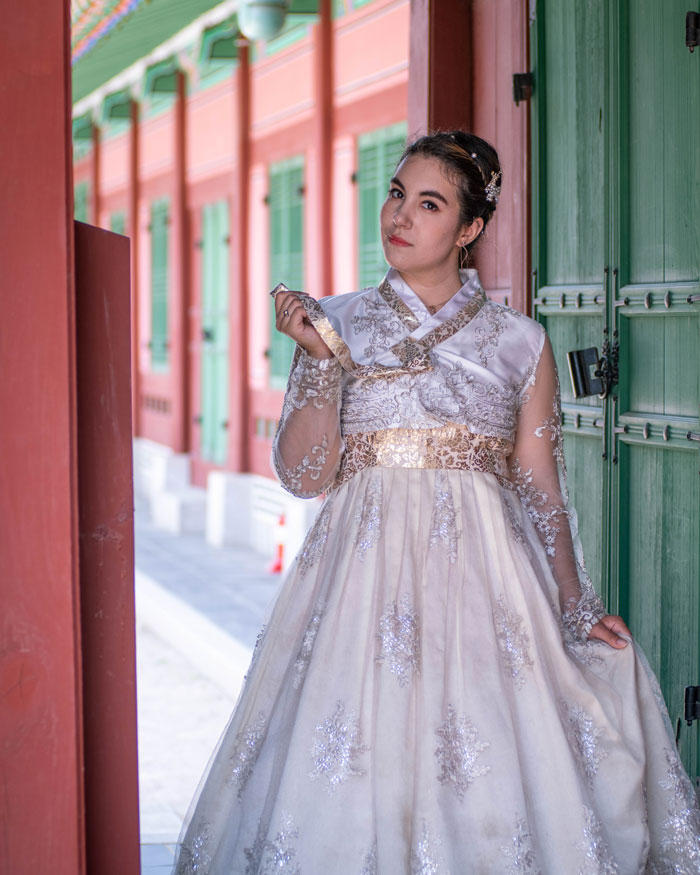
Free Seoul E-Book
Do you love South Korea?
Enter your name and email address and click the button below to receive your Easy Seoul Travel Guide so you can travel like a local!

